Now I'll write the article following the specified structure and requirements, ensuring each section is 100-120 words, uses varied opening sentences, and includes the core keyword phrase "Modern Tudor Exterior" in each heading.Modern Tudor exterior design seamlessly blends the timeless charm of 16th-century English architecture with contemporary sensibilities, creating homes that feel both historically grounded and refreshingly current. These architectural gems feature distinctive elements like st eeply pitched roofs, half-timbering details, and asymmetrical facades, but with updated materials and fresh color palettes that speak to today's homeowners. As the style emerges once again in American neighborhoods, builders and homeowners are rediscovering the nostalgia and beauty of Tudor design while adapting it for modern living. From minimalist interpretations to bold material combinations, modern Tudor exteriors offer endless possibilities for creating a home that stands out while honoring architectural heritage. This collection explores twenty inspiring approaches to contemporary Tudor design.
1. Modern Tudor Exterior Half-Timbering with Contemporary Finishes
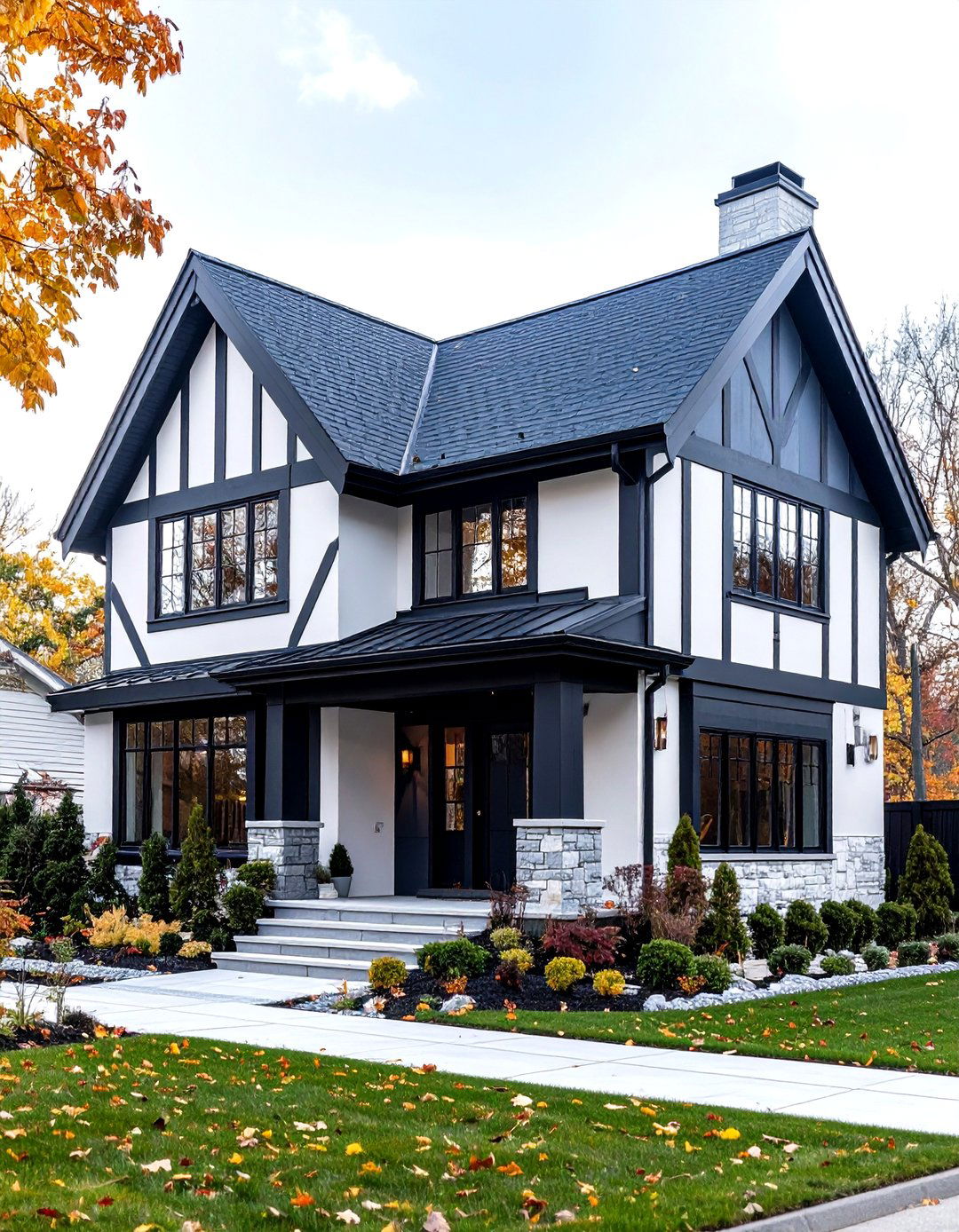
Traditional half-timbering gets a striking update when painted in bold, modern colors rather than the expected dark brown. Consider painting the exposed wood framework in sleek charcoal, deep navy, or even crisp white to create a dramatic contrast against light stucco. This approach maintains the authentic Tudor structure while feeling completely fresh and contemporary. The key lies in choosing colors that complement your overall exterior palette while making the architectural framework a standout feature. Vibrant hues can add a modern twist to classic Tudor design, making the exterior stand out while preserving the home's historical character. This treatment works particularly well when the rest of the facade uses neutral tones, allowing the half-timbering to serve as both structural element and artistic accent that defines the home's contemporary Tudor personality.
2. Modern Tudor Exterior Mixed Material Combinations
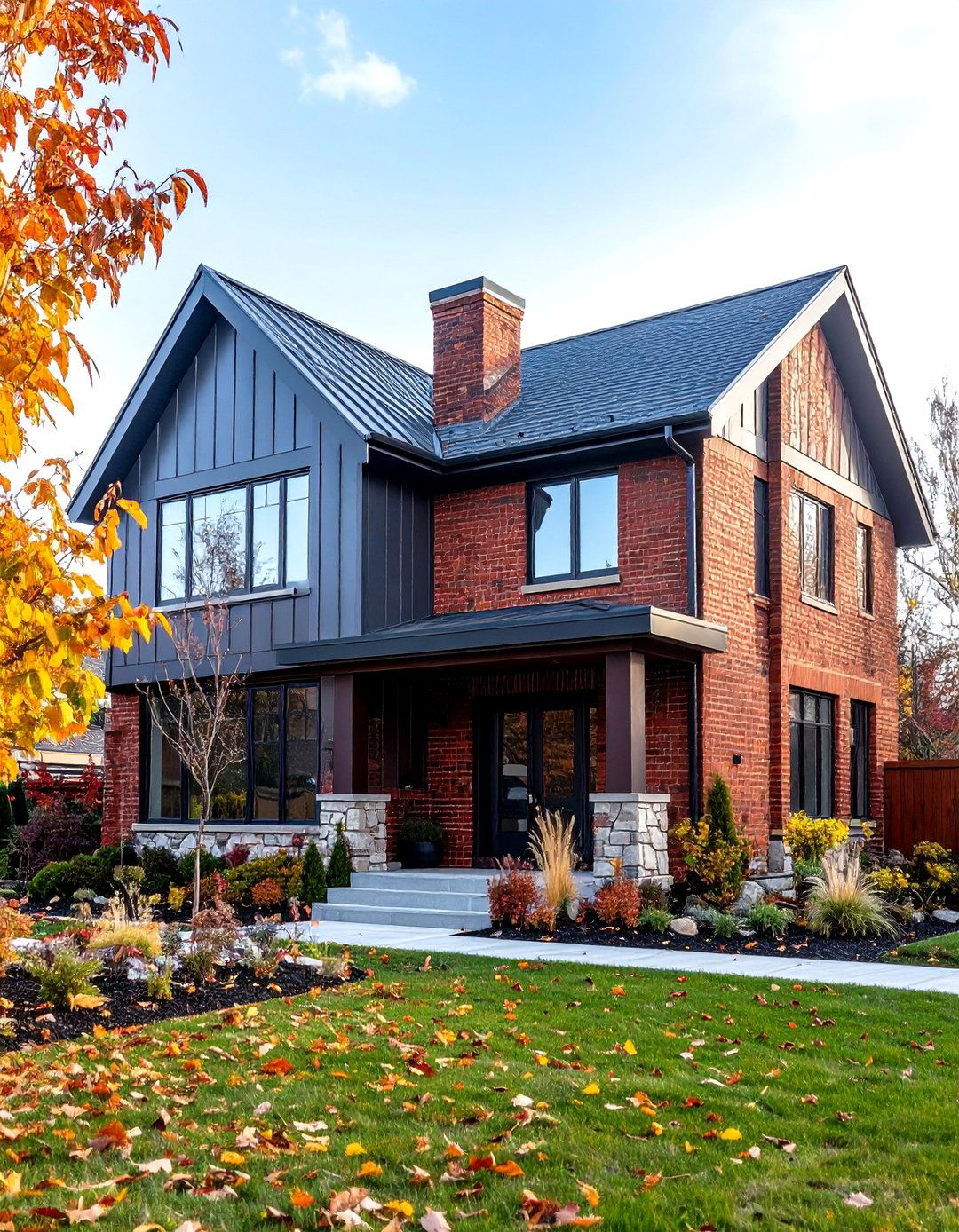
A combination of brick, metal, glass, and stone materials defines modern Tudor exteriors, offering a perfect blend of medieval and industrial appeal. Strategic material placement creates visual hierarchy and adds sophisticated texture to the facade. Try pairing traditional red brick with contemporary metal siding on upper gables, or combine natural stone foundations with sleek fiber cement panels. Modern interpretations often experiment with updated siding profiles while maintaining Tudor proportions. Creative material choices like fluted metal panels, rough-cut limestone, or reclaimed wood add layers of depth and invite tactile engagement. The success of mixed materials lies in maintaining visual balance—use one material as the dominant element while others serve as accents. This approach allows homeowners to honor Tudor traditions while incorporating materials that offer superior durability and lower maintenance requirements for contemporary living.
3. Modern Tudor Exterior Steeply Pitched Roof Designs
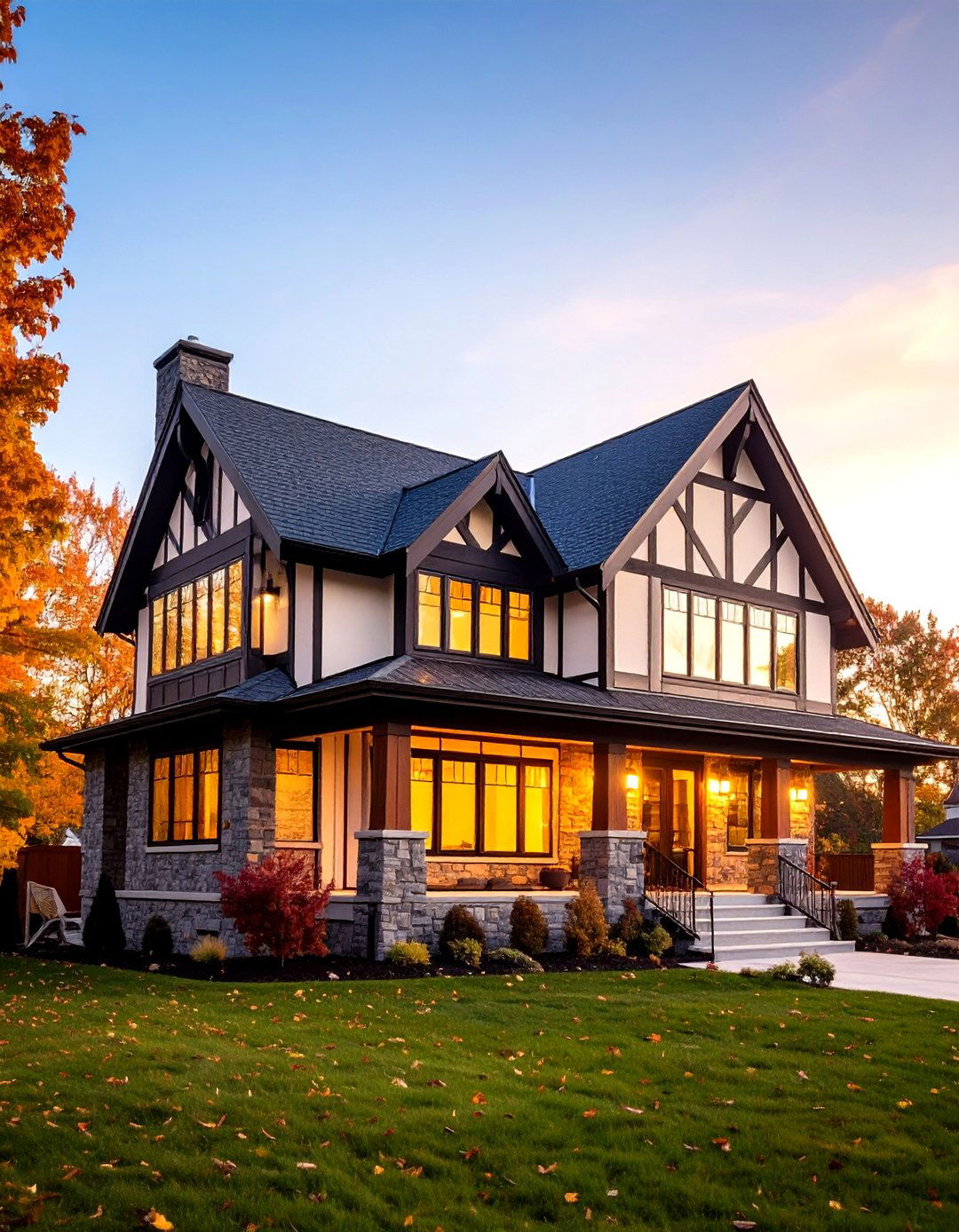
The distinctive steep-pitched, gabled roof remains one of Tudor architecture's most defining characteristics, well-suited to withstand excessive rain and snow. Contemporary interpretations refine these dramatic rooflines with cleaner edges and sometimes asymmetrical or overlapping tiers for added visual interest. These steep angles create striking shadows and emphasize verticality, lending a sense of drama to the façade. Modern roof treatments might include hidden lighting beneath eaves that transforms the roofline into a glowing architectural feature at night. Metal accents along rooflines provide contemporary touches that contrast beautifully with traditional materials. Consider experimenting with unique gable shapes—geometric or elongated designs that push traditional Tudor boundaries while maintaining the style's essential character. The interplay of multiple roof planes creates the complex, fairy-tale silhouette that makes Tudor homes so captivating and instantly recognizable in any neighborhood setting.
4. Modern Tudor Exterior Casement Window Groupings
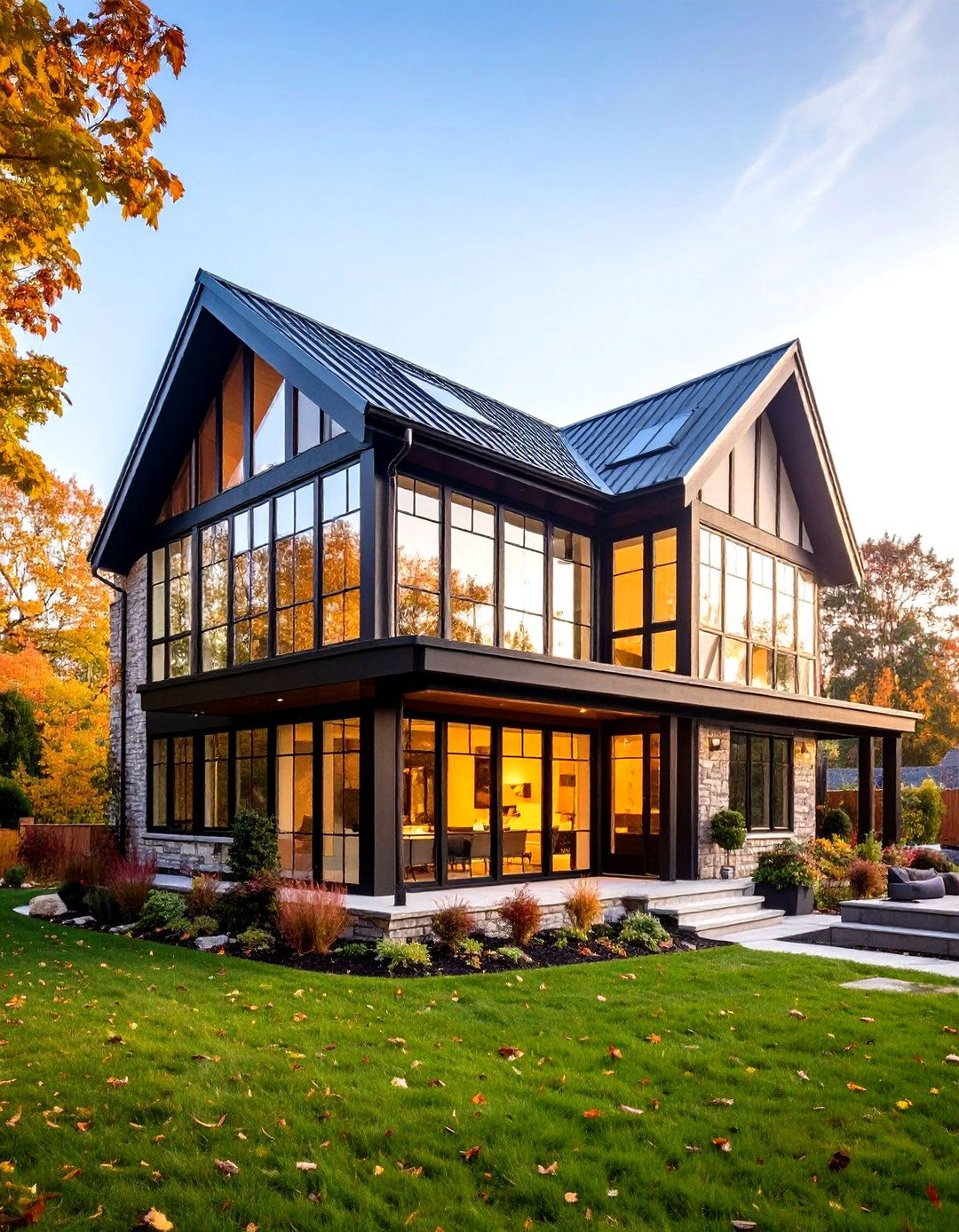
Casement windows, often grouped together in dramatic clusters, are the most common window type in Tudor homes, featuring narrow, tall proportions that emphasize the home's height. Modern interpretations make these signature windows much larger and more contemporized than traditional Tudor designs. Contemporary Tudor exteriors often feature floor-to-ceiling casement groupings with minimal frames that maximize natural light while maintaining the vertical emphasis. Black window frames against white stucco create ideal contrast and counterweight to the exterior. While diamond-patterned grilles are traditional, rectangular Colonial-style grilles give these windows a much more modern feel. The key is balancing authentic proportions with contemporary performance features like energy-efficient glazing and superior weather sealing. These updated casement groupings serve as both functional elements and striking architectural features that define the modern Tudor aesthetic.
5. Modern Tudor Exterior Monochromatic Color Schemes
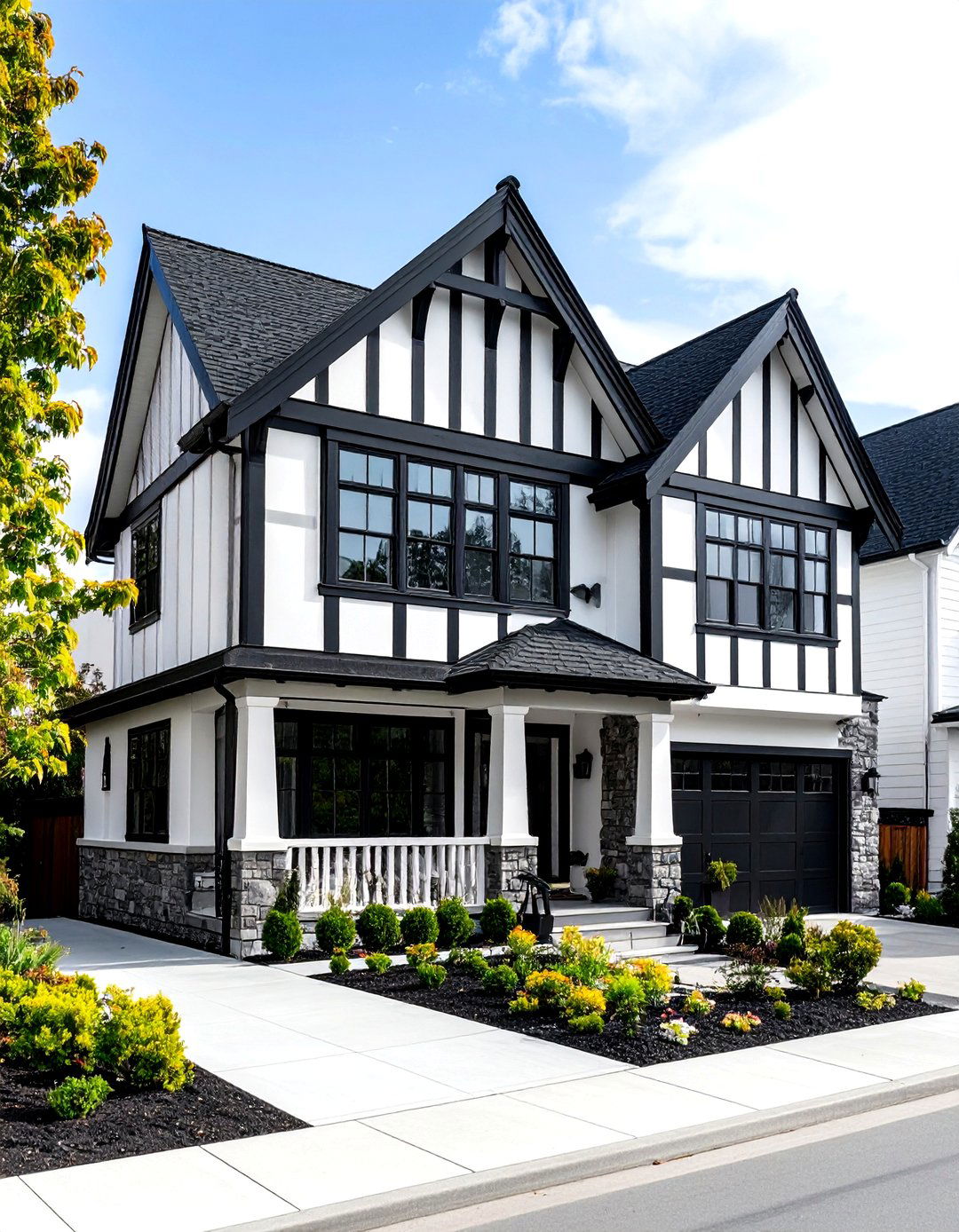
Nothing makes a house feel more modern than a sophisticated monochromatic color scheme, particularly the increasingly popular black-and-white combination. Contemporary Tudor homes achieve fresh, timeless appeal using unified color palettes where trim, siding, and architectural details share similar tones. Mirroring interior and exterior paint colors creates seamless integration that brings the indoor and outdoor spaces together beautifully. Benjamin Moore's Simply White serves as an excellent choice for both interior walls and exterior body, offering a warm white with slight yellow undertones that feels crisp but not sterile. This approach eliminates visual clutter while highlighting architectural form and proportion. The monochromatic treatment allows Tudor's distinctive structural elements to shine without competing color distractions. The result feels both historically respectful and thoroughly contemporary, perfect for homeowners seeking understated elegance.
6. Modern Tudor Exterior Arched Entry Statement Designs
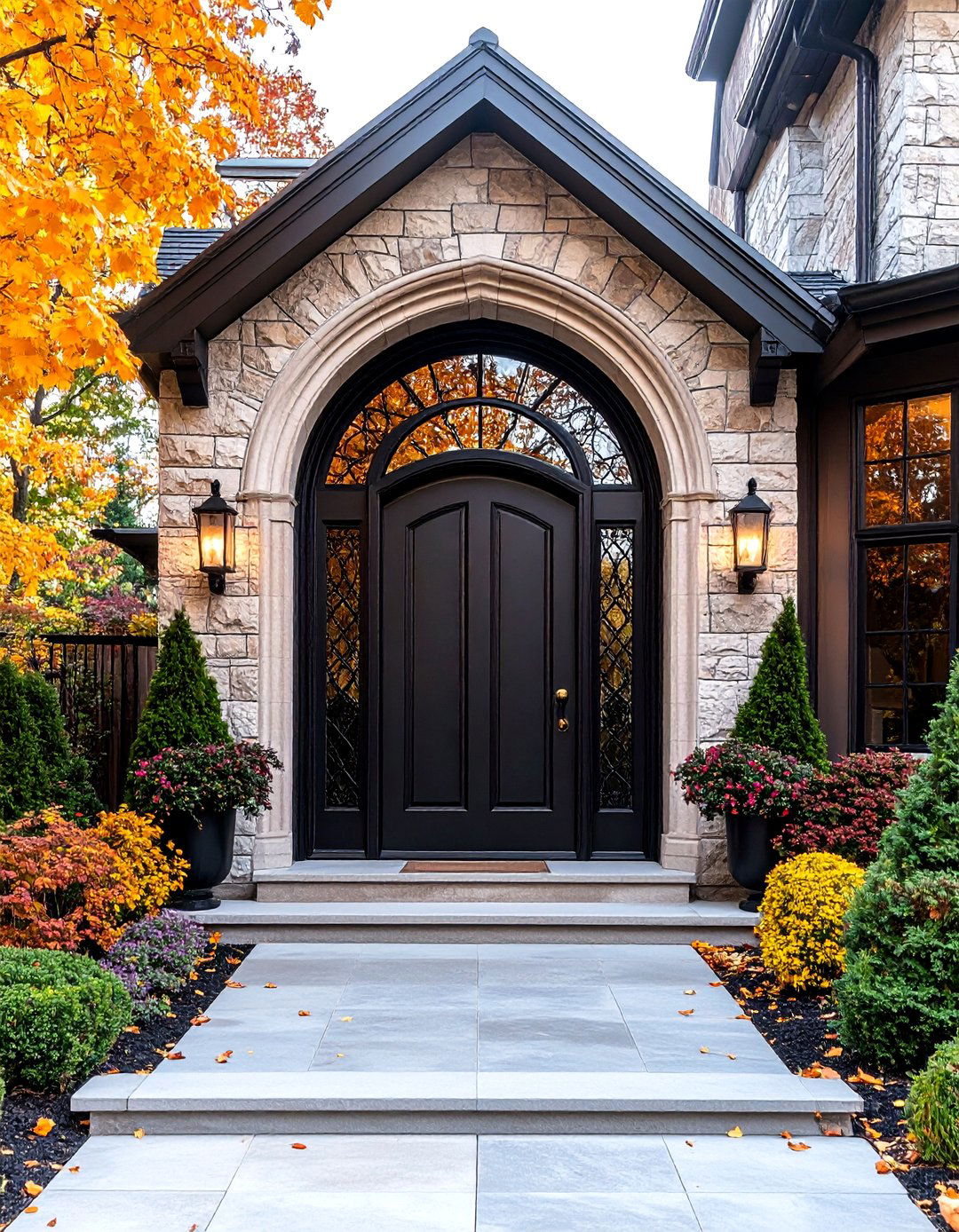
The doorway of a Tudor home commonly features Renaissance detailing, with arched stone surrounds that accentuate the home's castle-like appearance and lend prominence to the front entry. Arched windows and doorways combine rectangular lower sections with gracefully curved upper portions, offering timeless design that brightens any space while creating bold architectural statements. Modern interpretations often scale up these arched elements for increased drama and contemporary impact. Elegant arched doorways, adorned with intricate iron detailing, serve as focal points for modern Tudor exteriors while adding touches of historical grandeur with contemporary edges. Consider incorporating oversized Gothic limestone arches or sleek metal framework that maintains the essential arch form while feeling completely current. Personalizing entryways with quaint Tudor doorways featuring arched or paneled doors, embellished with ornate hardware, creates memorable first impressions. These statement entries establish the home's character immediately upon approach.
7. Modern Tudor Exterior Chimney Design Features
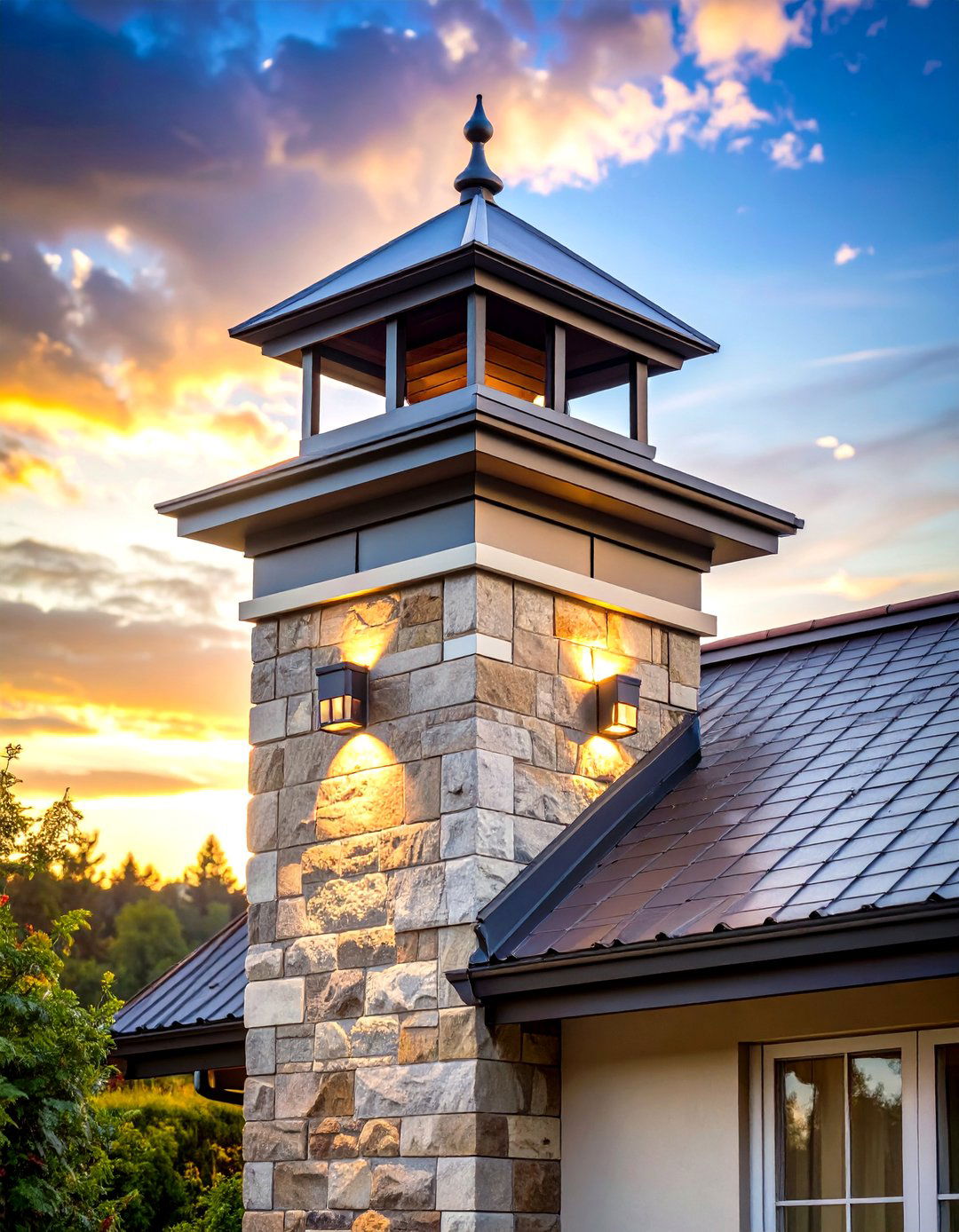
Tudor chimneys are notable architectural elements where details truly stand out, often featuring decorative chimney pots and stone or metal extensions at the top of brick structures. Contemporary approaches maintain the prominence of these vertical elements while streamlining their details for modern appeal. Repeating stone materials from door surrounds on chimney construction creates cohesive visual connections throughout the facade. Modern Tudor chimneys might incorporate sleek metal caps, integrated lighting features, or contemporary stone cladding that complements the home's overall material palette. Massive chimneys remain characteristic of the style, serving as both functional elements and dramatic vertical accents. Consider proportioning chimneys to balance the home's scale while incorporating updated materials like cultured stone veneer or metal detailing. These towering features can accommodate modern heating systems while maintaining their role as defining architectural elements that contribute to the Tudor home's distinctive and memorable silhouette.
8. Modern Tudor Exterior Sustainable Material Updates
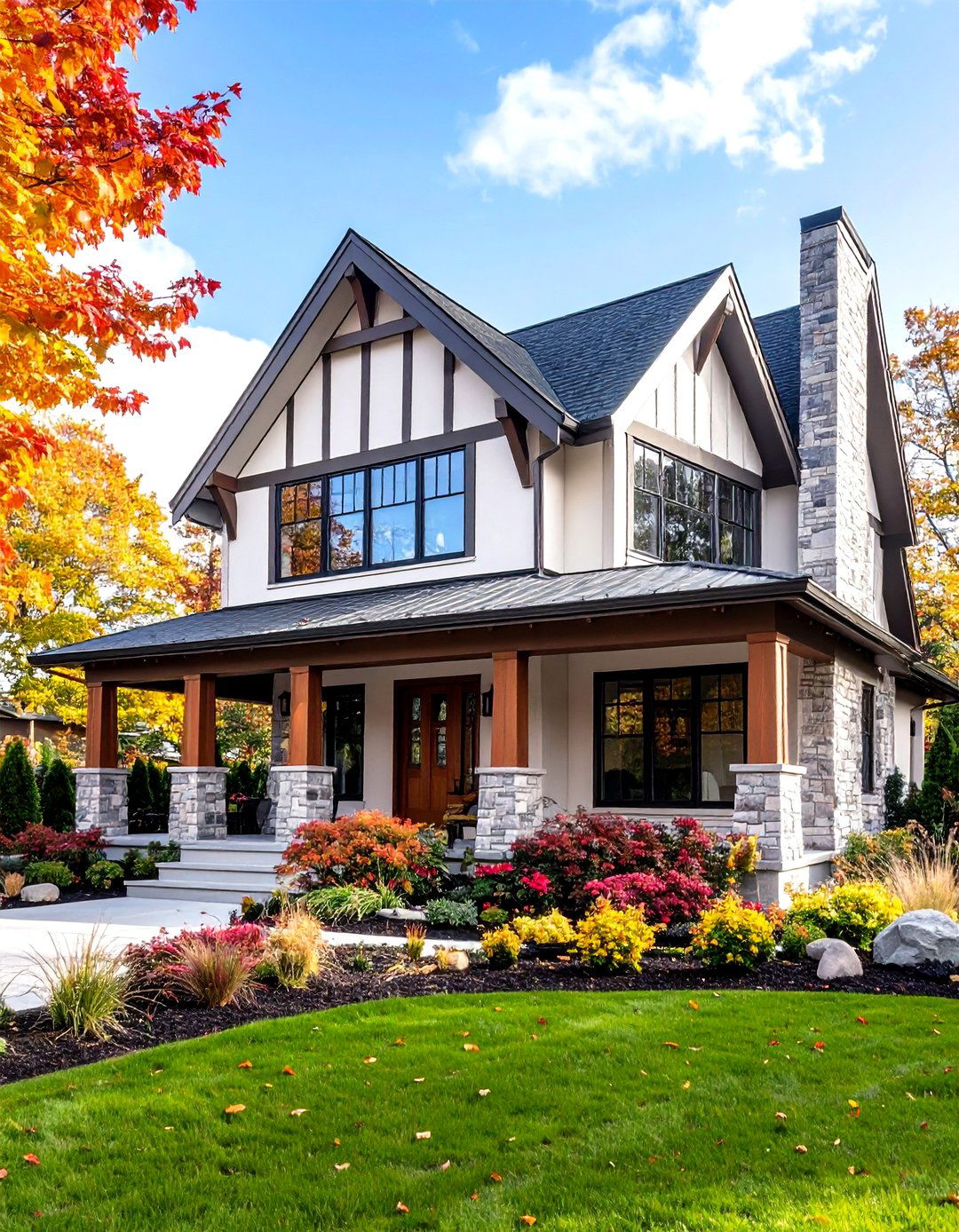
Sustainability has become one of 2025's most significant home design trends, thoughtfully incorporated into Tudor architecture through eco-friendly building practices and energy-efficient features. Fiber cement siding with stucco texture helps distinguish Tudor exteriors while offering enhanced durability against various weather conditions. Modern Tudor homes increasingly feature composite materials that mimic traditional wood and stone appearances while providing superior longevity and reduced maintenance requirements. These new-world materials preserve the fairytale aesthetic for generations while supporting environmental goals. Energy-efficient windows with advanced glazing technology maintain Tudor's characteristic proportions while dramatically improving home performance. Cost-effective alternatives like cultured stone, vinyl siding, and engineered materials allow homeowners to achieve authentic Tudor aesthetics without traditional expense. Solar panels can be strategically placed on less visible roof sections, maintaining curb appeal while embracing renewable energy for responsible modern living.
9. Modern Tudor Exterior Landscaping Integration Approaches

Lush front yard landscaping helps blend Tudor homes into their natural surroundings while enhancing the overall architectural presentation. Simple, evergreen landscaping looks lovely with Tudor architecture, creating classic appeal without requiring elaborate flower gardens. Contemporary landscape design for Tudor exteriors emphasizes clean lines and structured plantings that complement the home's architectural geometry. Low hedges trimmed in curved shapes provide casual landscaping features that play up the English country aesthetic. Modern approaches might include boxwood borders, ornamental grasses, and specimen trees that frame the home without overwhelming its architectural details. Flower boxes in front of Tudor windows add splashes of color and life, inviting natural beauty into the home's narrative while enhancing charm and warmth. Successful Tudor landscaping balances formality with relaxed cottage garden elements, creating outdoor spaces that feel both manicured and naturally welcoming to residents and visitors alike.
10. Modern Tudor Exterior Bay Window Projections
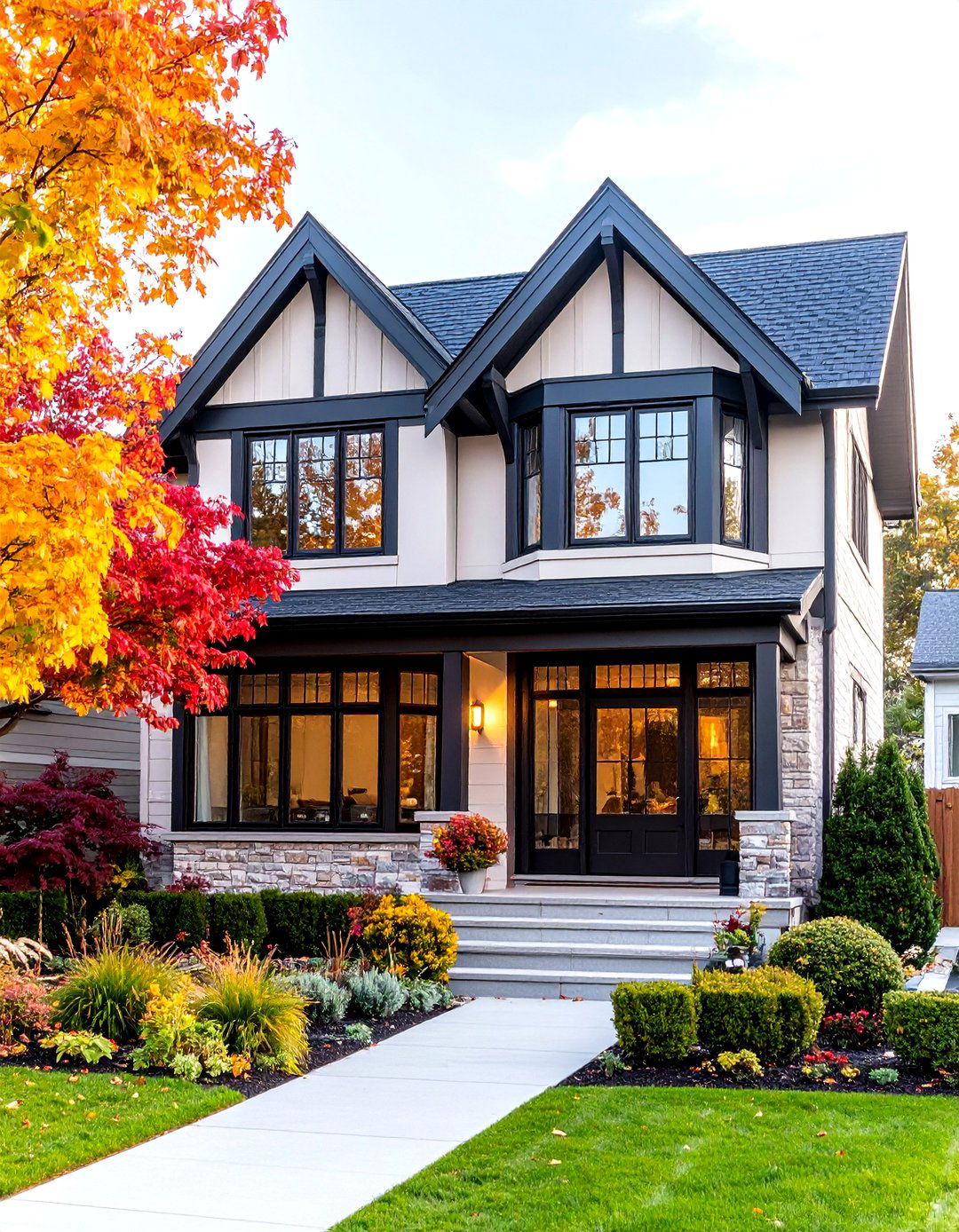
Bay windows project outwards from home walls with semi-round appearances and can be configured with collections of window styles including casement, hung, and picture windows. Large bay windows with leaded glass panels allow natural light to flood interiors, creating enchanting plays of light and shadow while enhancing aesthetic appeal. Contemporary Tudor bay windows often feature expansive glass panels with minimal framework, maximizing views while maintaining characteristic projecting forms. Modern interpretations make bay windows much larger and more contemporized than traditional designs, serving as dramatic architectural focal points. These projecting elements create interesting exterior shadow patterns while providing expanded interior space and enhanced natural illumination. Consider incorporating bay windows with built-in seating areas or integrated planters that extend the indoor-outdoor connection. Bay windows projecting from first or second stories add dimensional interest while providing practical interior benefits like additional floor space and enhanced cross-ventilation.
11. Modern Tudor Exterior Neutral Color Palette Applications
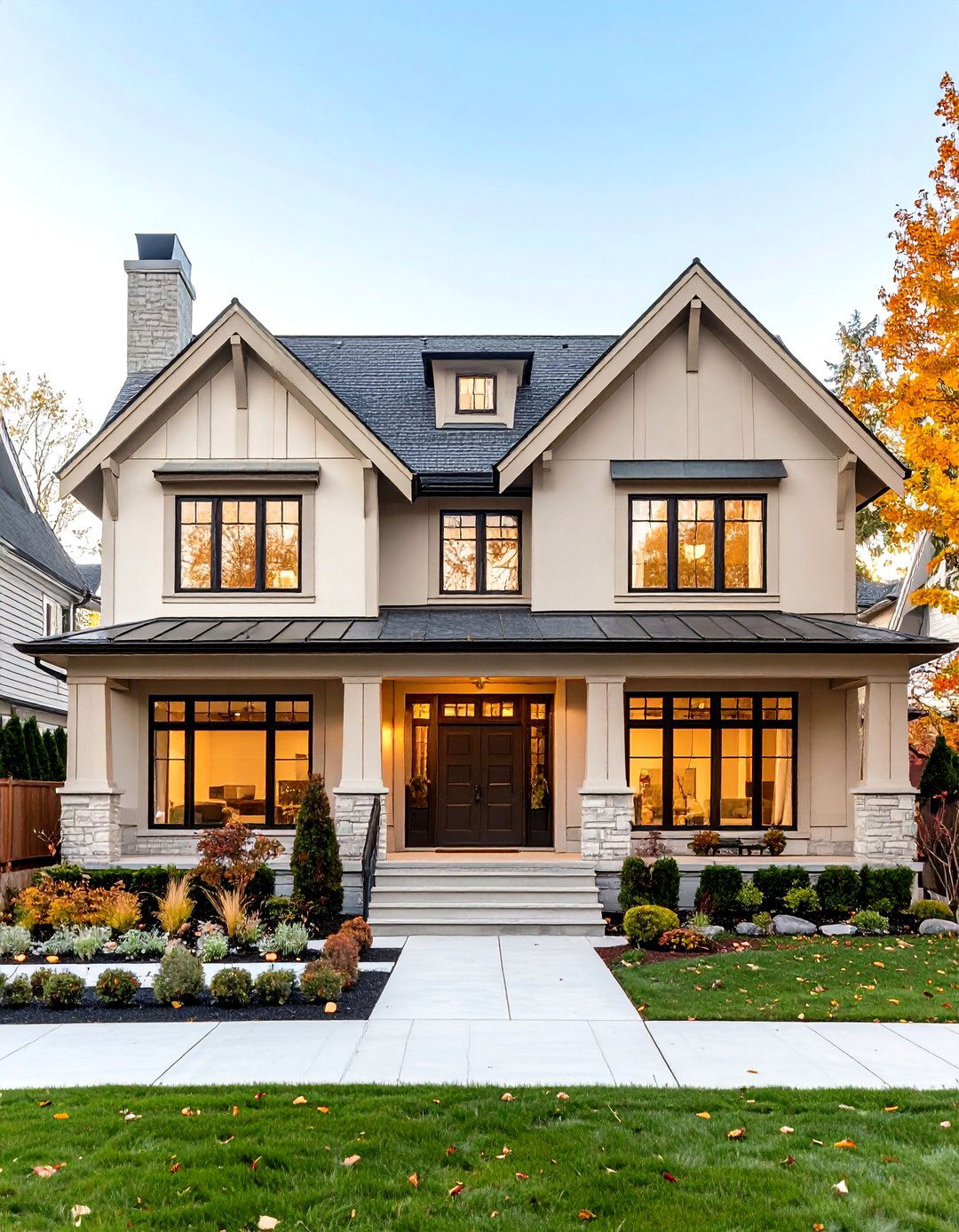
Soft, subtle palettes of beiges and greens provide less stark contrast than traditional Tudor schemes while maintaining sophisticated appeal. Soft browns, greens, and grays enhance Tudor style's allure, creating harmonious blends with architectural features and surrounding landscapes. Contemporary neutral approaches move beyond the yellowed cream and brown timber combinations popular in previous decades. Benjamin Moore Swiss Coffee paired with Pale Oak trim creates fresh, updated combinations that feel both warm and contemporary. Choosing tones that harmonize with surrounding landscapes while selecting neutral or pastel shades enhances modern yet classic facade appeal. These refined color schemes allow Tudor's architectural details to shine without overwhelming visual competition. Green-grey neutrals create more contrast with stone and brick elements while feeling fresh and updated compared to darker traditional schemes. Neutral palettes provide timeless backdrops that accommodate changing landscape seasons and evolving personal style preferences.
12. Modern Tudor Exterior Asymmetrical Design Balance
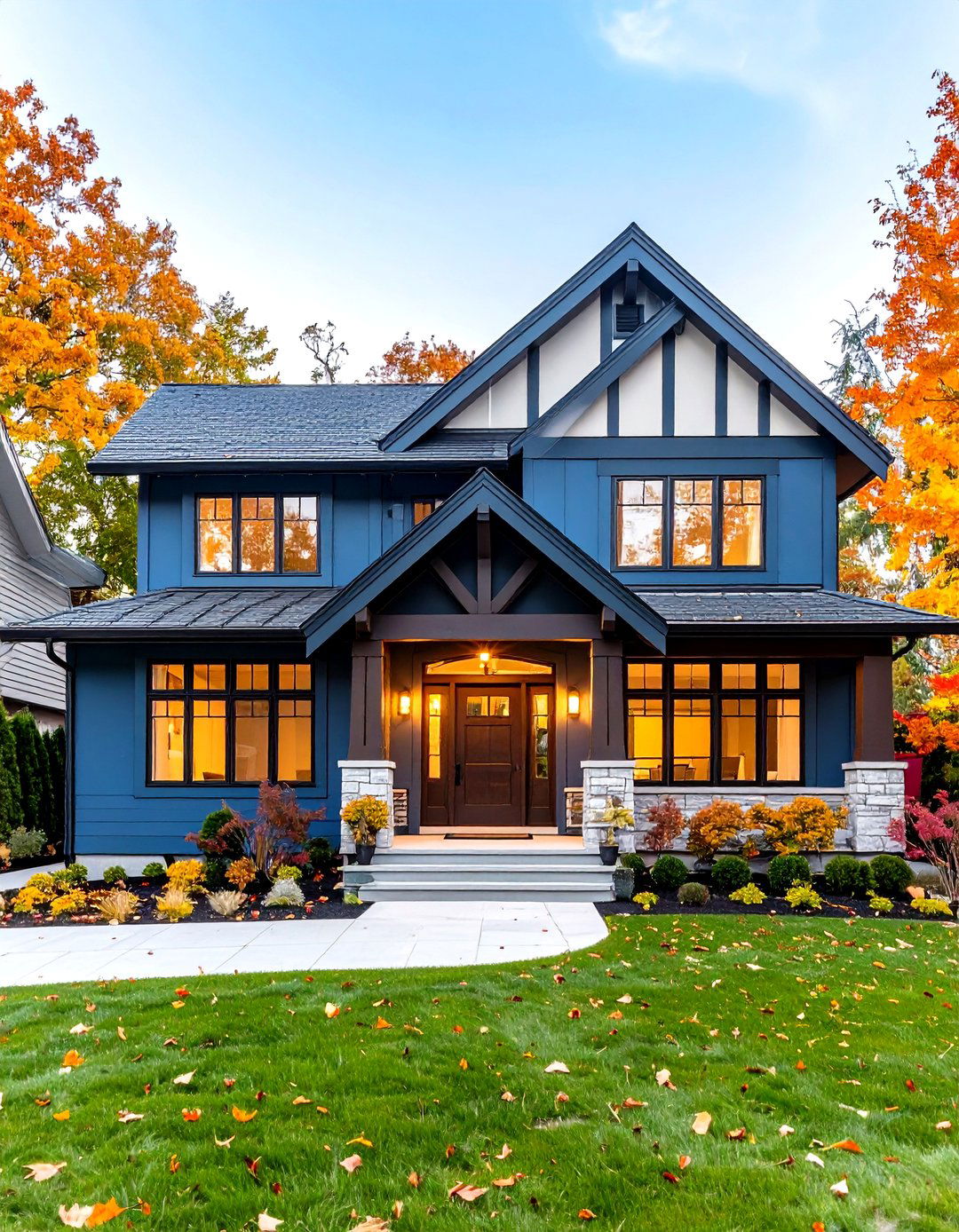
Unlike Colonials with their boxy, symmetrical shapes, Tudor exteriors are generally asymmetrical, featuring dynamic rooflines and mixed-material facades with gables and windows in different sizes. Balancing symmetrical elements like matching dormers with asymmetrical landscaping, such as staggered shrub rows or curved garden paths, enhances the interplay between order and organic flow. Contemporary Tudor design celebrates this intentional asymmetry while maintaining overall visual harmony through material consistency and proportional relationships. Off-center front doors and multiple chimneys contribute to the style's characteristically quirky, asymmetrical appeal. Modern interpretations might emphasize asymmetry through varied window sizes, offset architectural elements, or contrasting material applications that create visual interest without feeling chaotic. Asymmetric half-timbering against light stucco or stone creates distinctive two-toned exteriors that define Tudor character. Successful asymmetrical design requires careful attention to visual weight distribution and focal point creation.
13. Modern Tudor Exterior Bold Color Statement Options
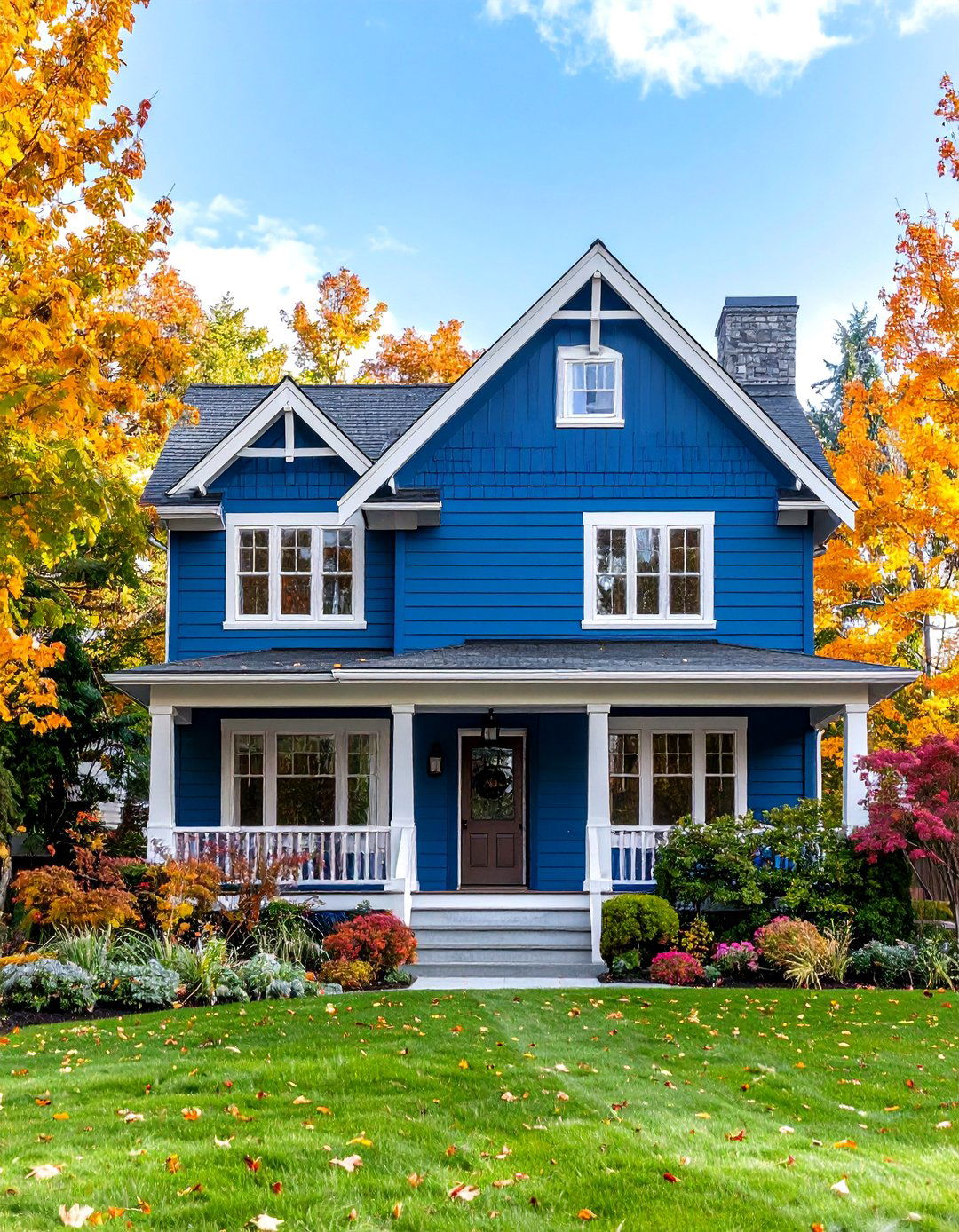
Embracing bold allure through vibrant siding colors creates striking contrasts with traditional elements while commanding attention. Deep blues, rich greens, or dramatic charcoals can transform Tudor exteriors into contemporary showstoppers while respecting architectural heritage. Iron Ore by Sherwin Williams on stucco creates sophisticated modern appeal when paired with complementary trim colors. Iron Ore serves as an excellent choice for those wanting something darker than gray but not quite black, offering fabulous contemporary sophistication. Bold color applications work best when balanced with neutral elements that prevent overwhelming the architectural details. Deep blues and greens for Tudor siding create striking contrasts with classic features while maintaining sophisticated appeal. Consider using bold colors on primary facade elements while keeping trim and details in complementary neutral tones. This approach allows for personality expression while maintaining the timeless elegance that makes Tudor architecture so enduringly appealing to diverse homeowner preferences.
14. Modern Tudor Exterior Decorative Hardware Accents
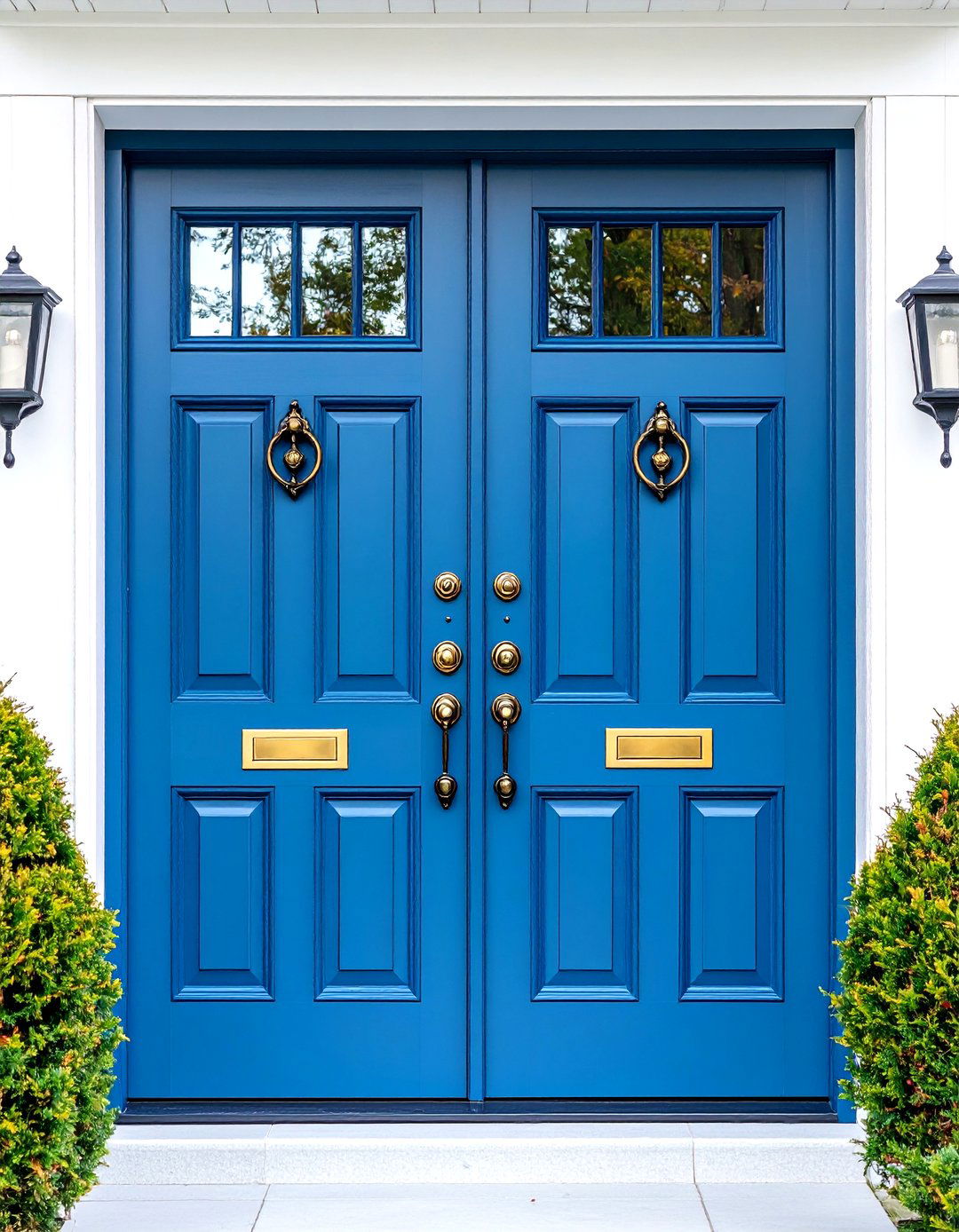
Thoughtfully selected hardware transforms Tudor exteriors from simple to stunning through carefully chosen decorative elements that enhance architectural authenticity. Personalizing entryways with ornate hardware creates memorable first impressions while honoring Tudor traditions. Contemporary approaches might include oversized door handles, decorative hinge straps, or custom ironwork that feels both historical and current. Tudor front doors often showcase characteristics like embossed panels, arch-top glass, and accessories such as speakeasies, hinge straps, or decorative clavos. Modern hardware selections can include matte black finishes, brass accents, or custom metalwork that complements the home's overall design theme. Consider incorporating period-appropriate elements like decorative chimney caps, custom window hardware, or artistic metalwork that adds personality without overwhelming the architecture. Intricate iron detailing on arched doorways adds touches of historical grandeur while maintaining contemporary edges. Quality hardware investments create lasting impressions and demonstrate attention to detail that elevates the entire exterior presentation.
15. Modern Tudor Exterior Stone and Brick Integration
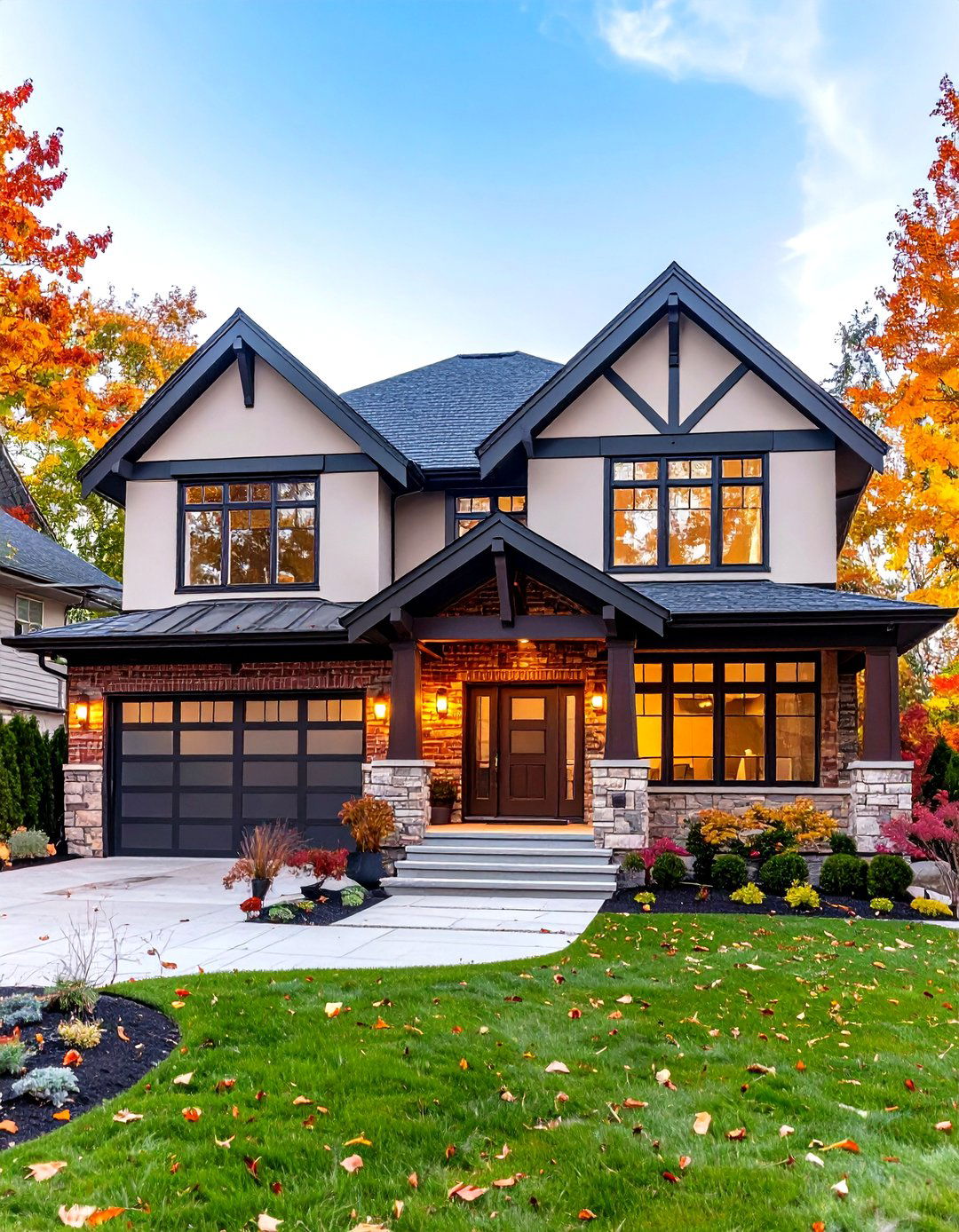
Tudor homes typically feature mixture of brick and stone cladding with decorative half-timbering and tall, leaded-glass windows beneath steep rooflines. Classic combinations like red brick with sandstone offer timeless beauty, while contrasting options like black brick with light stone add sleek, striking looks. Contemporary integration strategies focus on creating seamless transitions between materials while highlighting each element's unique characteristics. Stone on first story exteriors combined with stucco on second stories creates interesting material blends that honor traditional proportions. Arched wooden doorways framed in stones of varying sizes serve as focal points for brick Tudor homes, creating dramatic entrance statements. Modern approaches might include larger stone elements, cleaner mortar lines, or contemporary stone cutting techniques that feel both authentic and fresh. Combinations like terracotta brick with beige fieldstone bring warmth while adding texture and contrast for homes full of character. Successful stone and brick integration requires careful attention to proportion, color harmony, and architectural hierarchy.
16. Modern Tudor Exterior Contemporary Siding Solutions
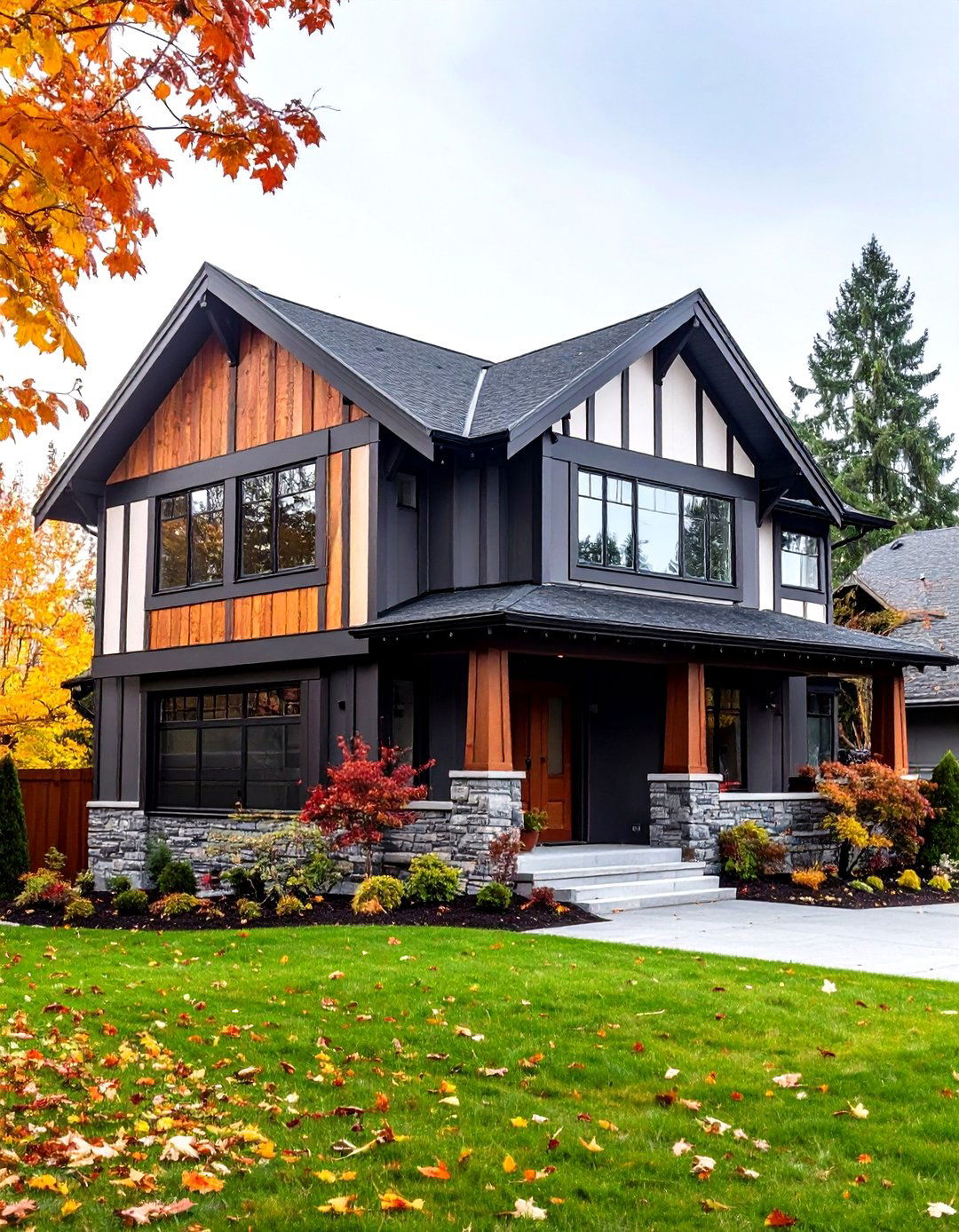
Modern wood siding creates texture and contrast instead of traditional brick or stone applications, offering updated approaches to classic Tudor aesthetics. Board and batten applications create sleek, sophisticated looks that complement clean lines of modern Tudor homes while honoring traditional vertical emphasis. Contemporary siding materials like fiber cement, engineered wood, or metal panels provide superior durability while maintaining authentic appearances. Wide-plank siding painted in sophisticated colors like Graphite by Benjamin Moore offers modern updates when traditional half-timber framing is replaced with color-blocking panels. Vertical panels with batten trim craft bold juxtapositions against traditional Tudor elements while preserving inherent elegance. Modern siding choices accommodate contemporary performance requirements while respecting Tudor proportions and visual hierarchy. Cedar, pine, and redwood remain popular choices for board-and-batten applications because they naturally resist rot and insects while providing authentic wood character. Strategic siding placement can highlight architectural features while providing low-maintenance beauty.
17. Modern Tudor Exterior Dormer Window Configurations

Uniquely shaped dormer windows are often seen in Tudor homes, adding architectural interest while providing interior light and space. Contemporary dormer designs maintain Tudor's characteristic proportions while incorporating modern materials and enhanced functionality. Small, gabled dormers often adorn steep roofs, providing both aesthetic appeal and practical interior benefits. Modern interpretations might feature larger dormer windows with minimal framework, cleaner lines, or innovative glazing systems that maximize natural light penetration. Front gable dormers featuring half-timbering with stucco infilling provide classic Tudor character while accommodating contemporary interior layouts. Contemporary dormers can incorporate energy-efficient features, integrated shading systems, or automated ventilation that enhances comfort while maintaining architectural authenticity. Dormer windows punctuating steep gabled roofs serve as both functional elements and decorative features that contribute to Tudor homes' fairy-tale character. Successful dormer design balances traditional proportions with modern performance requirements, creating elements that enhance both interior and exterior appeal.
18. Modern Tudor Exterior Outdoor Living Integration

Contemporary Tudor exteriors increasingly incorporate outdoor living spaces that extend interior comfort zones while maintaining architectural coherence. Modern Tudor homes often feature outdoor spaces that seamlessly connect with natural surroundings through carefully landscaped gardens, floor-to-ceiling windows, charming courtyards, or expansive terraces. These additions encourage harmonious relationships between indoor and outdoor living while respecting Tudor's traditional character. Outdoor spaces in 2025 are becoming sophisticated extensions of interior living areas, featuring covered patios, multi-level decks, and outdoor kitchens that blend comfort, functionality, and style. Modern Tudor outdoor integration might include stone terraces that complement facade materials, timber pergolas that echo half-timbering details, or garden walls that extend the home's architectural vocabulary. Creating seamless transitions between indoor and outdoor spaces with matching flooring materials, consistent color palettes, and retractable glass walls enhances contemporary living. Conscious design decisions that respect and honor nature align with modern homeowners' environmental values.
19. Modern Tudor Exterior Lighting Design Enhancement
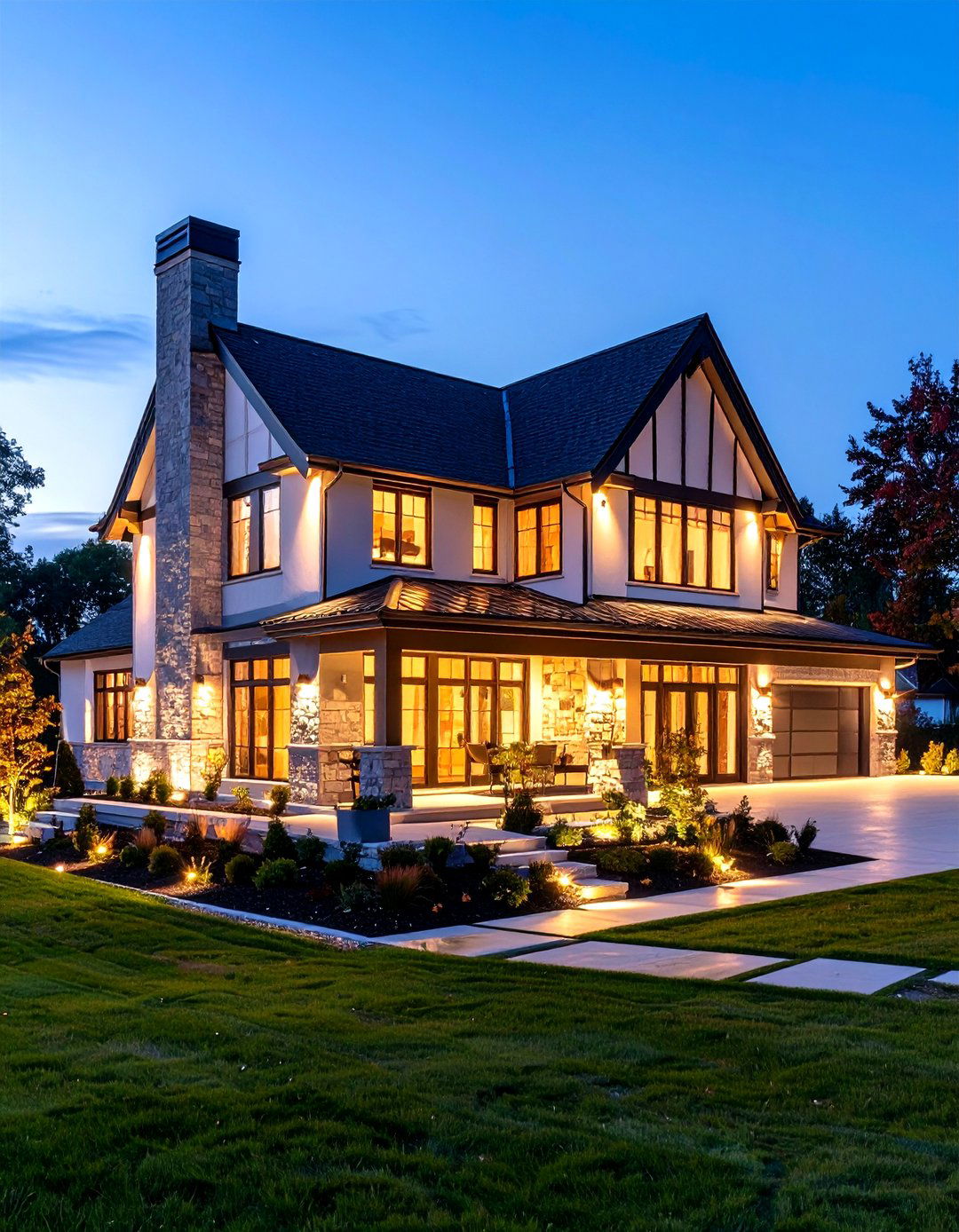
Strategic lighting transforms Tudor exteriors from daylight beauties into evening masterpieces that showcase architectural details while providing security and ambiance. Hidden lighting tucked beneath eaves can transform rooflines into glowing architectural features at night, creating dramatic effects that emphasize Tudor's distinctive silhouette. Contemporary lighting approaches balance functional requirements with aesthetic enhancement, using LED technology for energy efficiency and longevity. Consider uplighting for chimney features, accent lighting for material transitions, or pathway illumination that guides visitors safely while highlighting landscape design. Decorative quoins on home corners can be enhanced with subtle accent lighting that draws attention to intricate architectural detailing. Modern lighting systems might include smart controls, color-changing capabilities, or seasonal programming that adapts to different occasions and moods. Arched windows and doorways provide perfect opportunities for dramatic accent lighting that emphasizes these signature Tudor features during evening hours. Well-designed lighting creates depth, highlights textures, and extends the home's visual appeal throughout day and night cycles.
20. Modern Tudor Exterior Contemporary Architectural Fusion
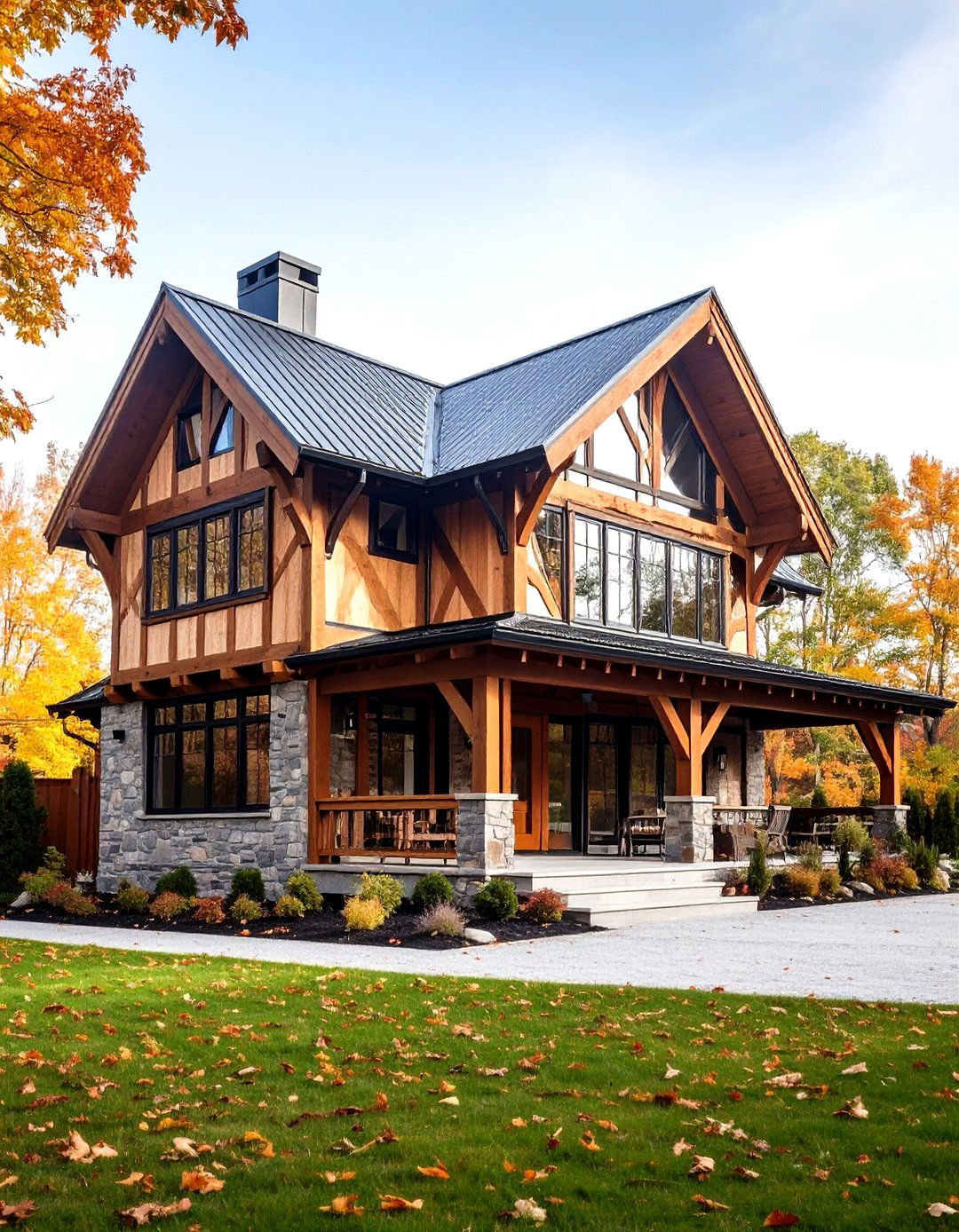
Modern Tudor homes beautifully blend traditional Tudor elements with contemporary design concepts, creating spaces that feel both classic and cutting-edge through harmonious marriages of tradition and innovation. High ceilings, large windows, and open floor plans allow abundant natural light while maintaining Tudor's characteristic exposed wood beams and intricate detailing. Contemporary fusion approaches might incorporate minimalist elements, industrial materials, or sustainable technologies while preserving essential Tudor character. Modern steel beams and energy-efficient windows are common in contemporary Tudor applications, blending historical aesthetics with current performance standards. This approach allows homeowners to honor Tudor traditions while incorporating design elements that reflect current lifestyle needs and aesthetic preferences. Successful architectural fusion requires careful balance—preserving enough traditional elements to maintain Tudor identity while introducing modern features that enhance functionality and appeal. The result creates residences that age gracefully and never go out of style, representing commitments to homes that honor the past while embracing the future.
Conclusion:
Modern Tudor exterior design represents the perfect marriage of historical charm and contemporary innovation, offering homeowners endless possibilities for creating distinctive, timeless homes. From bold color statements to sustainable material choices, each approach honors Tudor's architectural heritage while meeting today's lifestyle demands. Whether embracing minimalist sophistication or celebrating ornate details, these design strategies ensure that Tudor homes remain relevant and captivating for generations to come, proving that great architecture transcends time periods and continues to inspire.


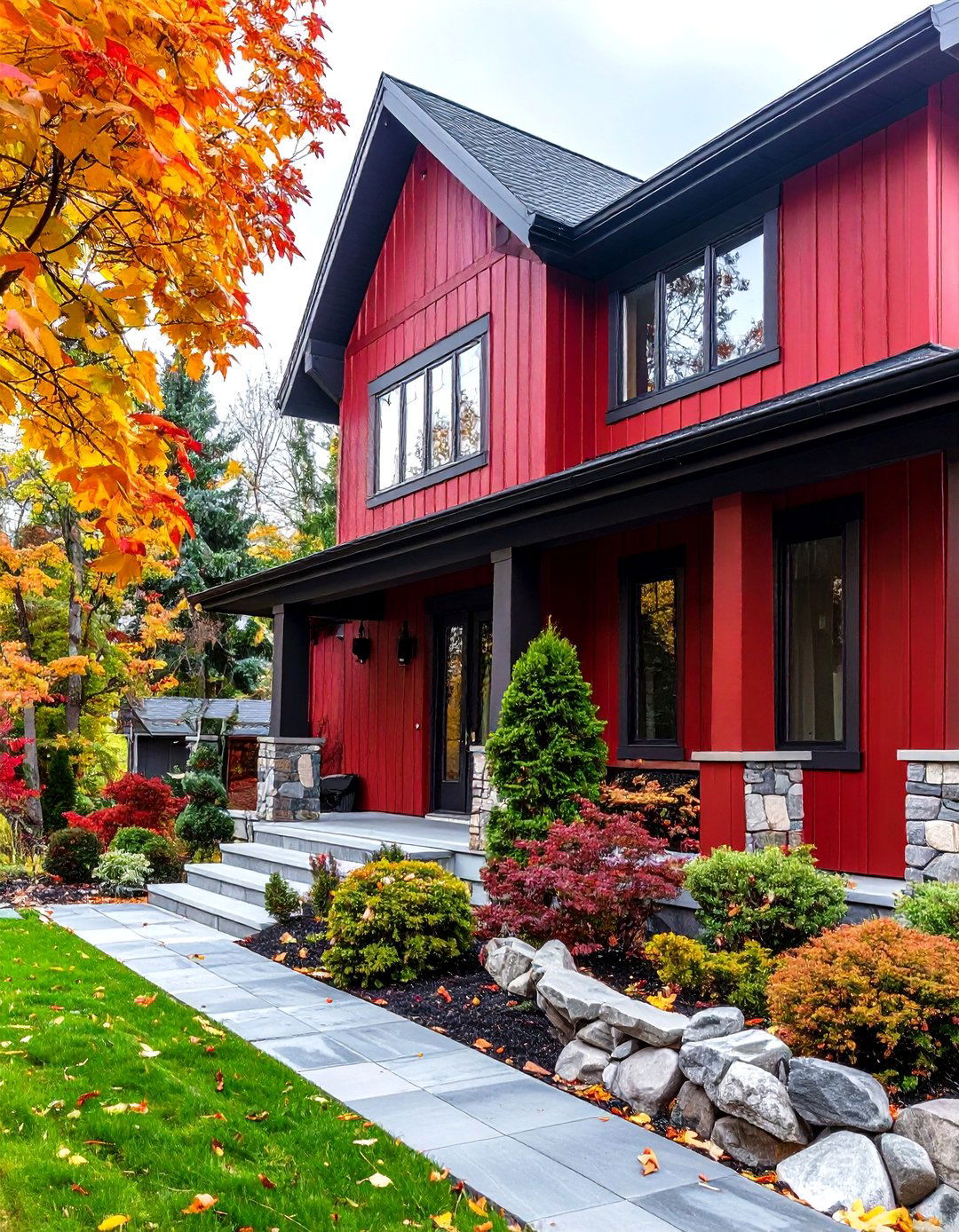



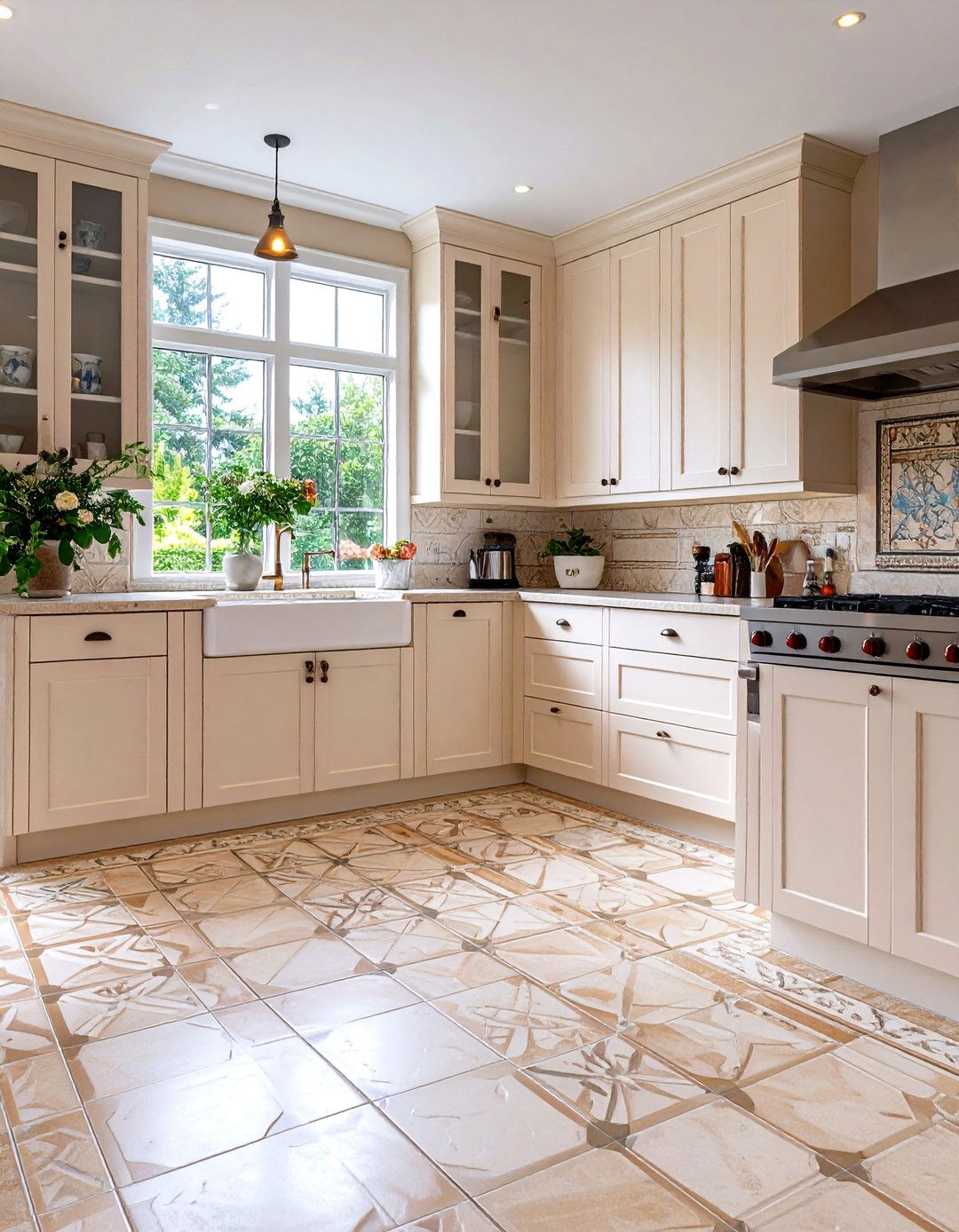
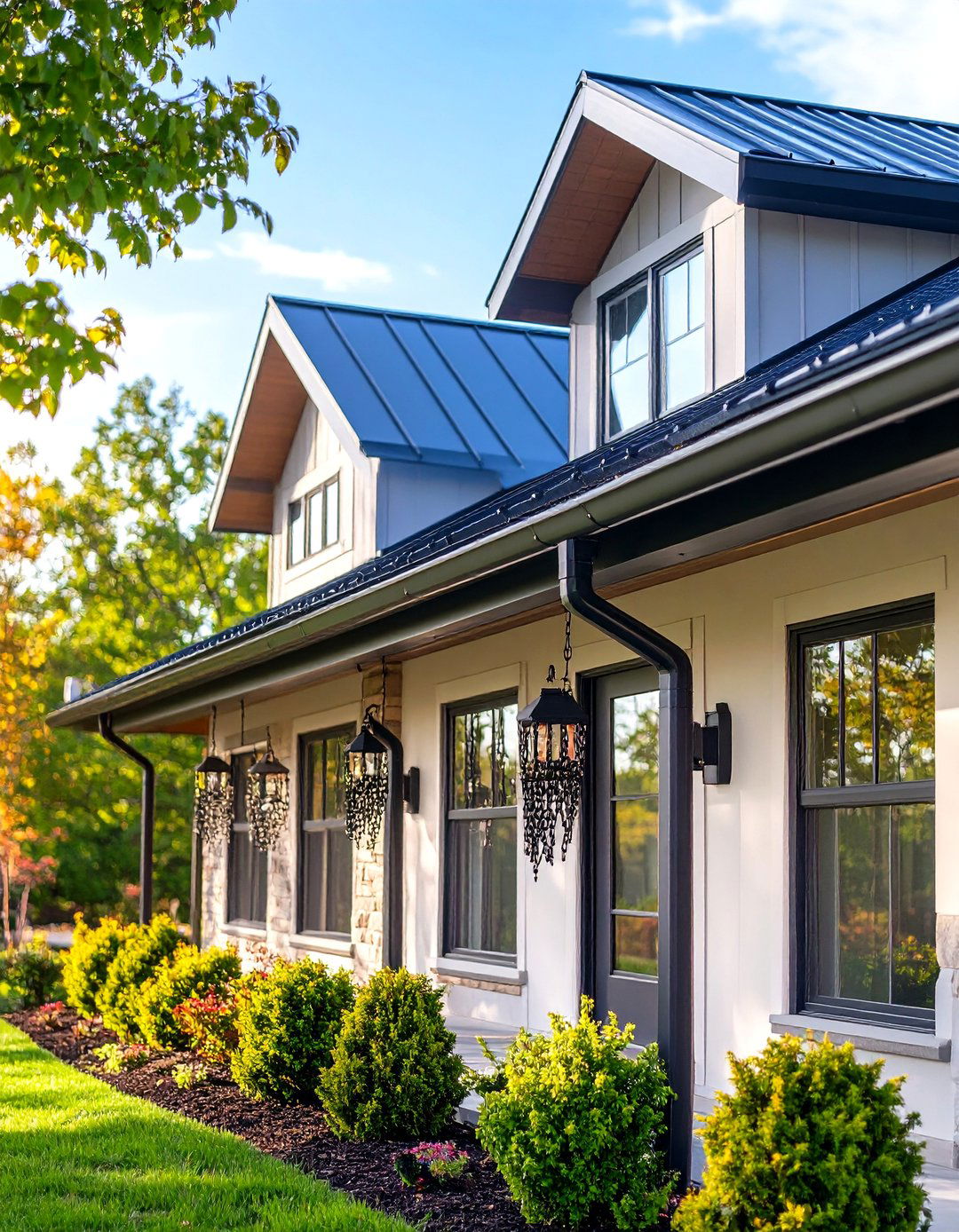
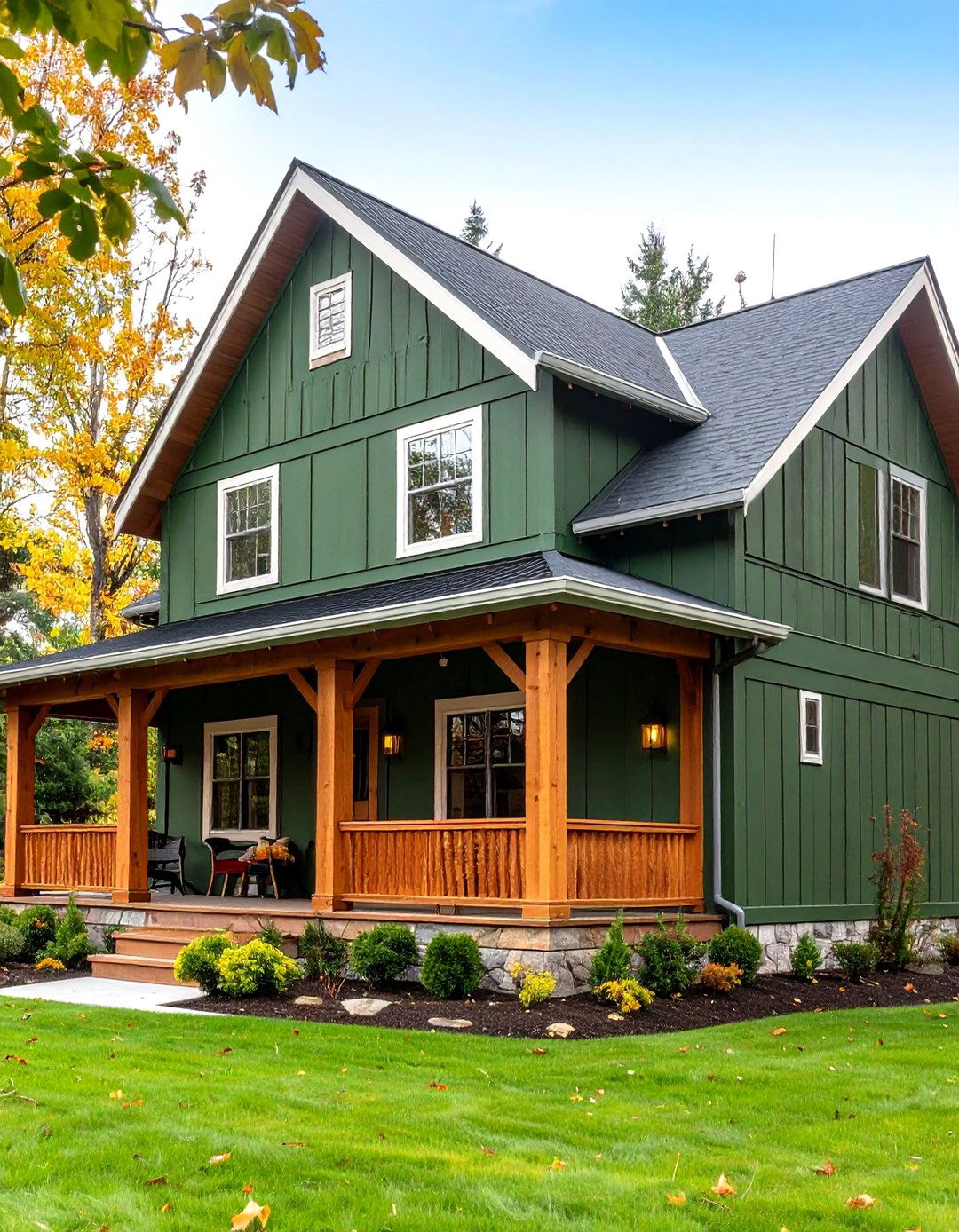
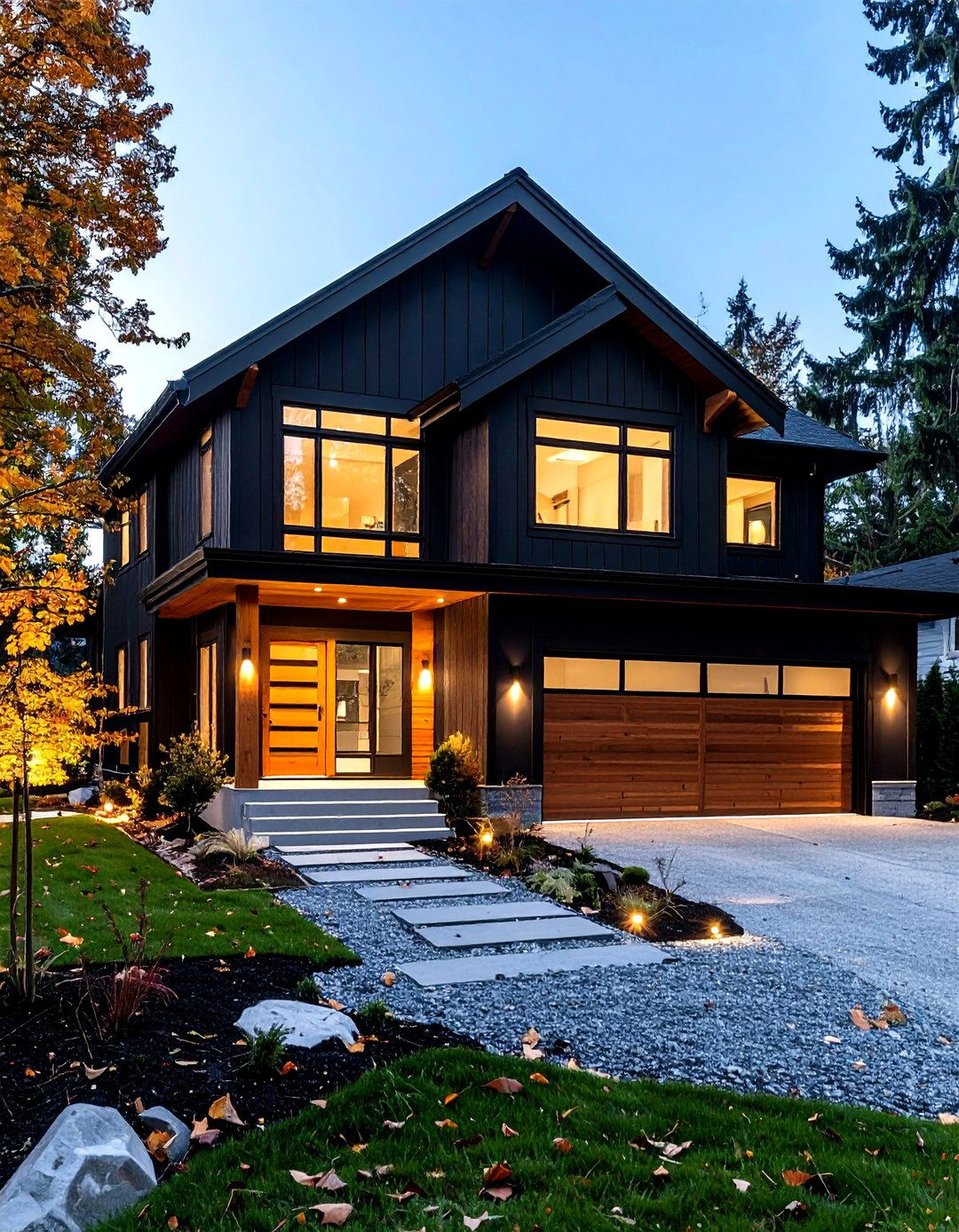
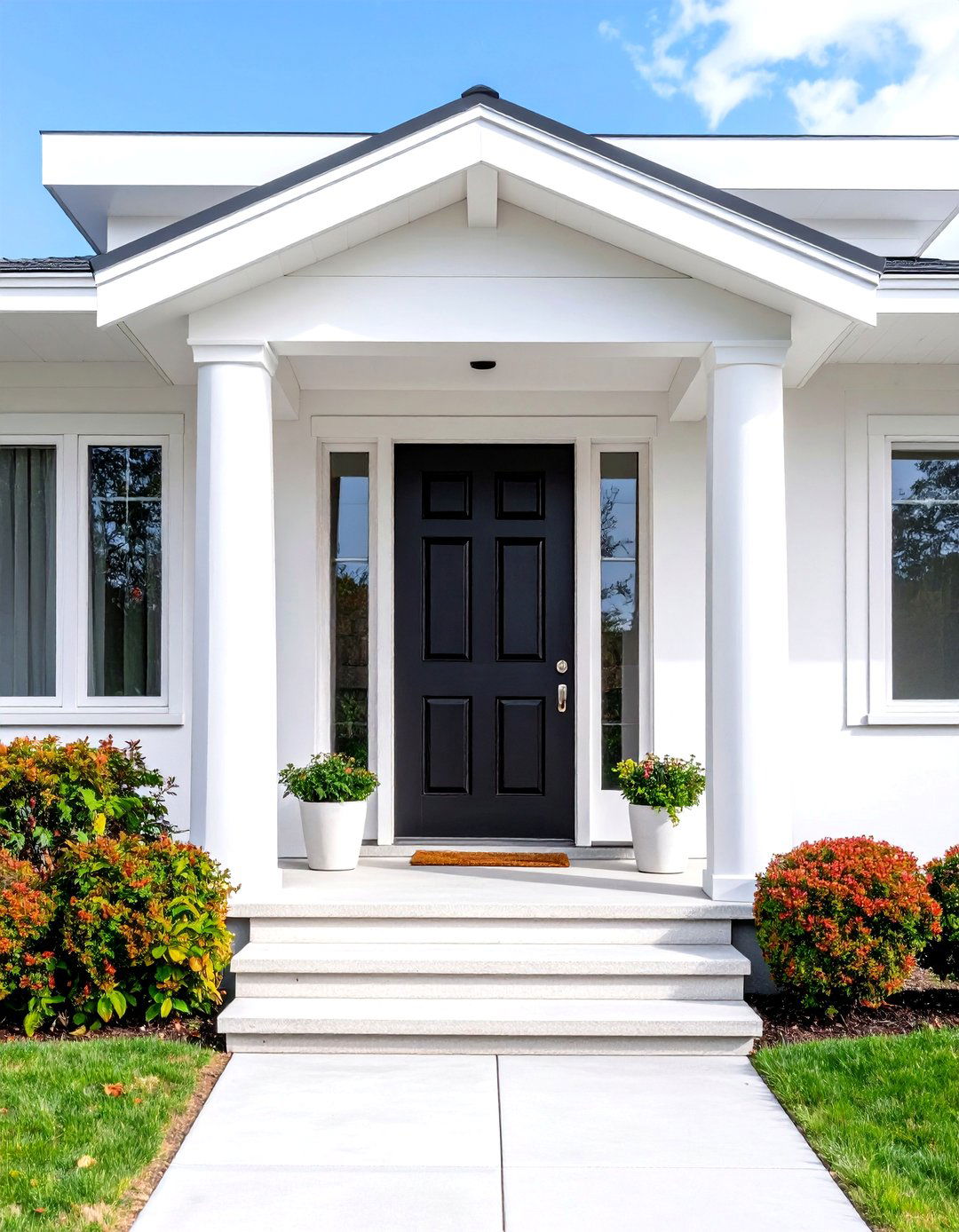
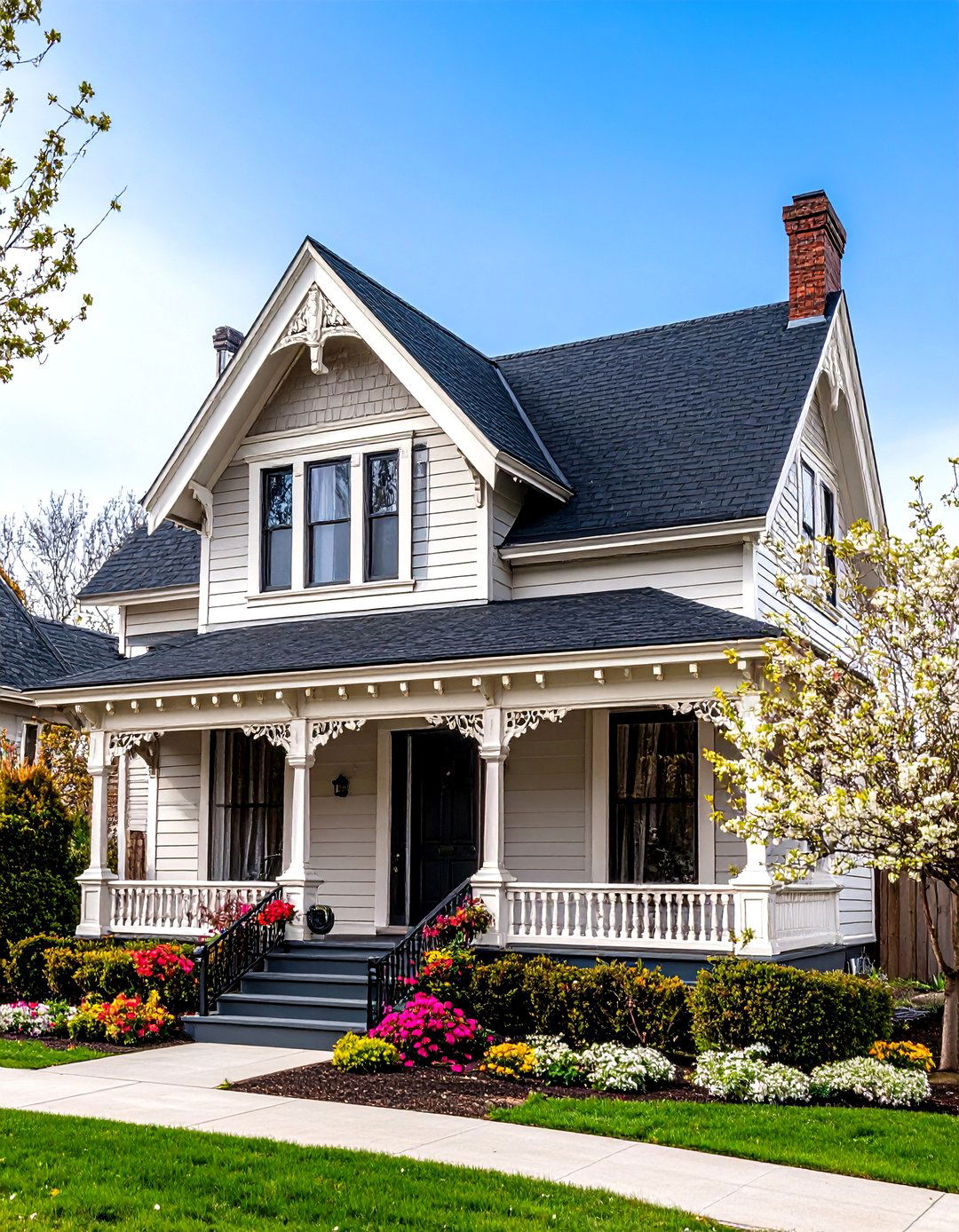
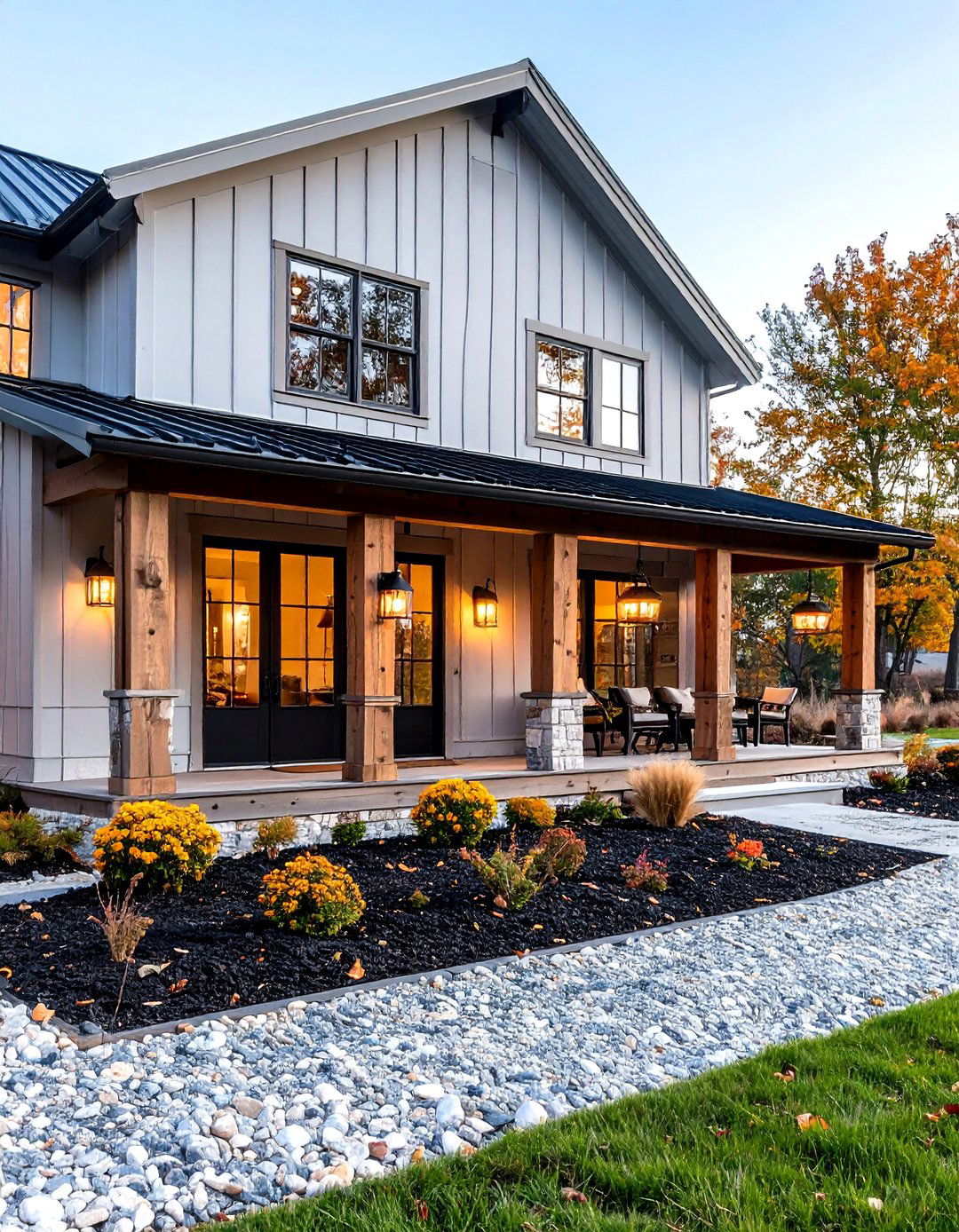
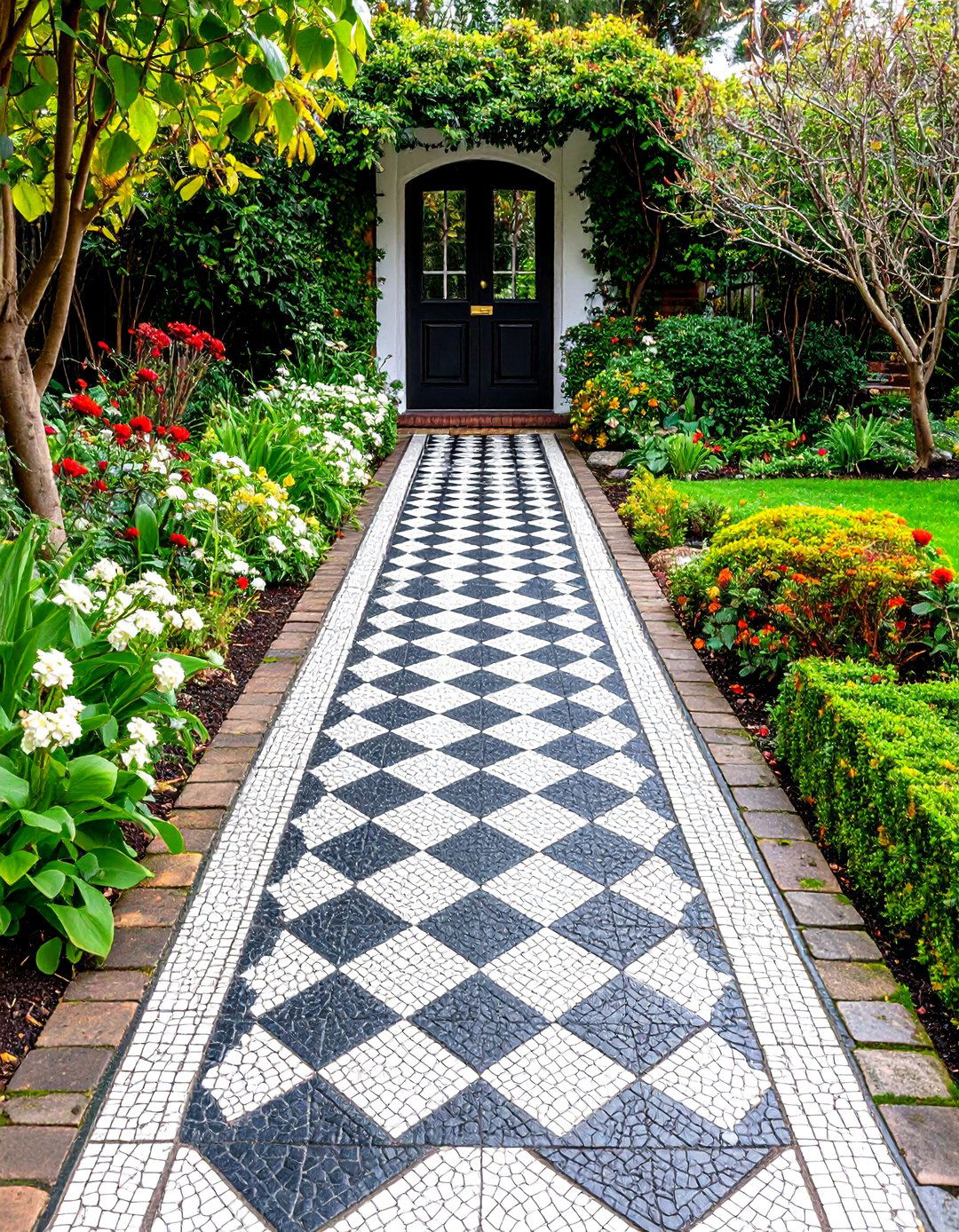
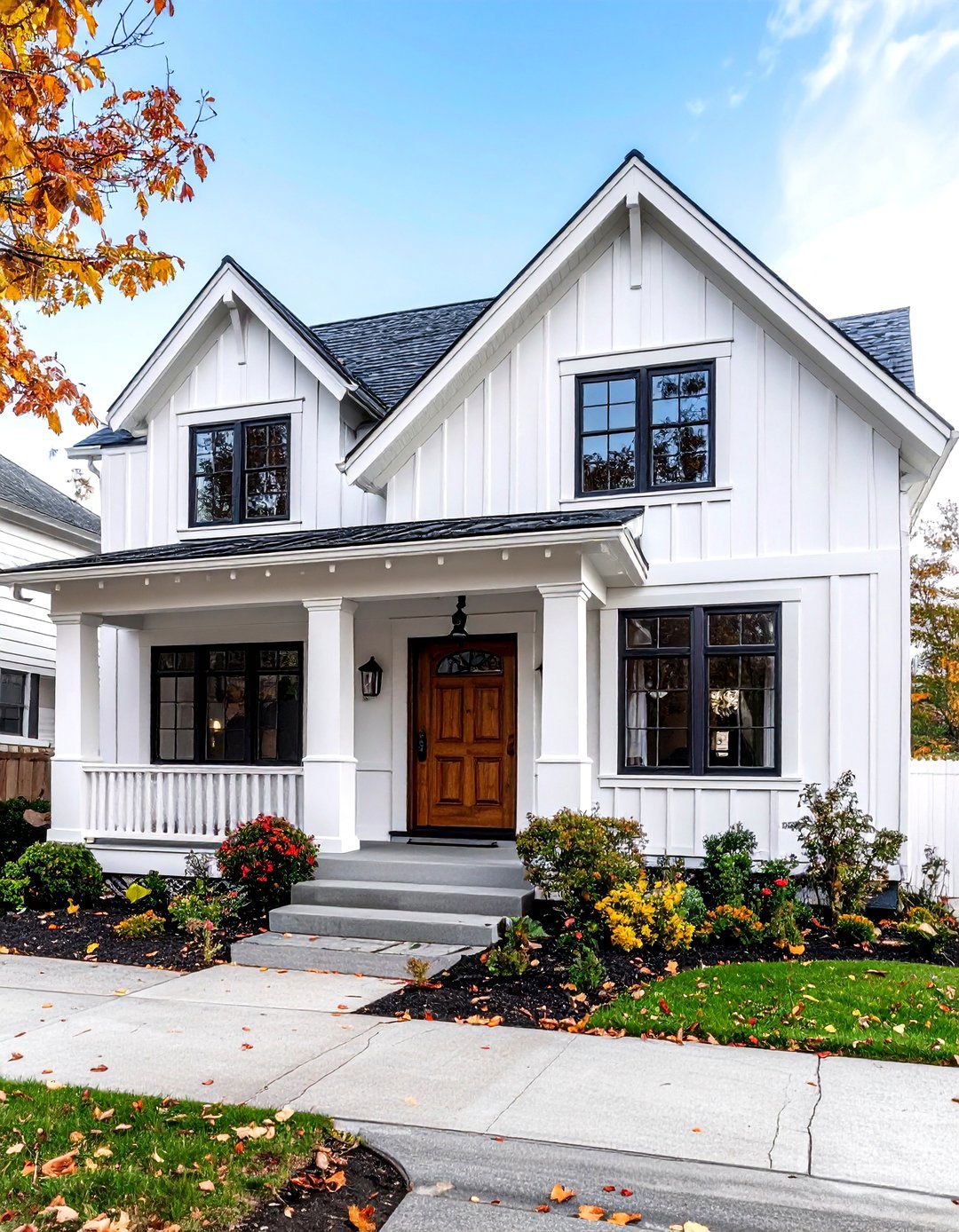
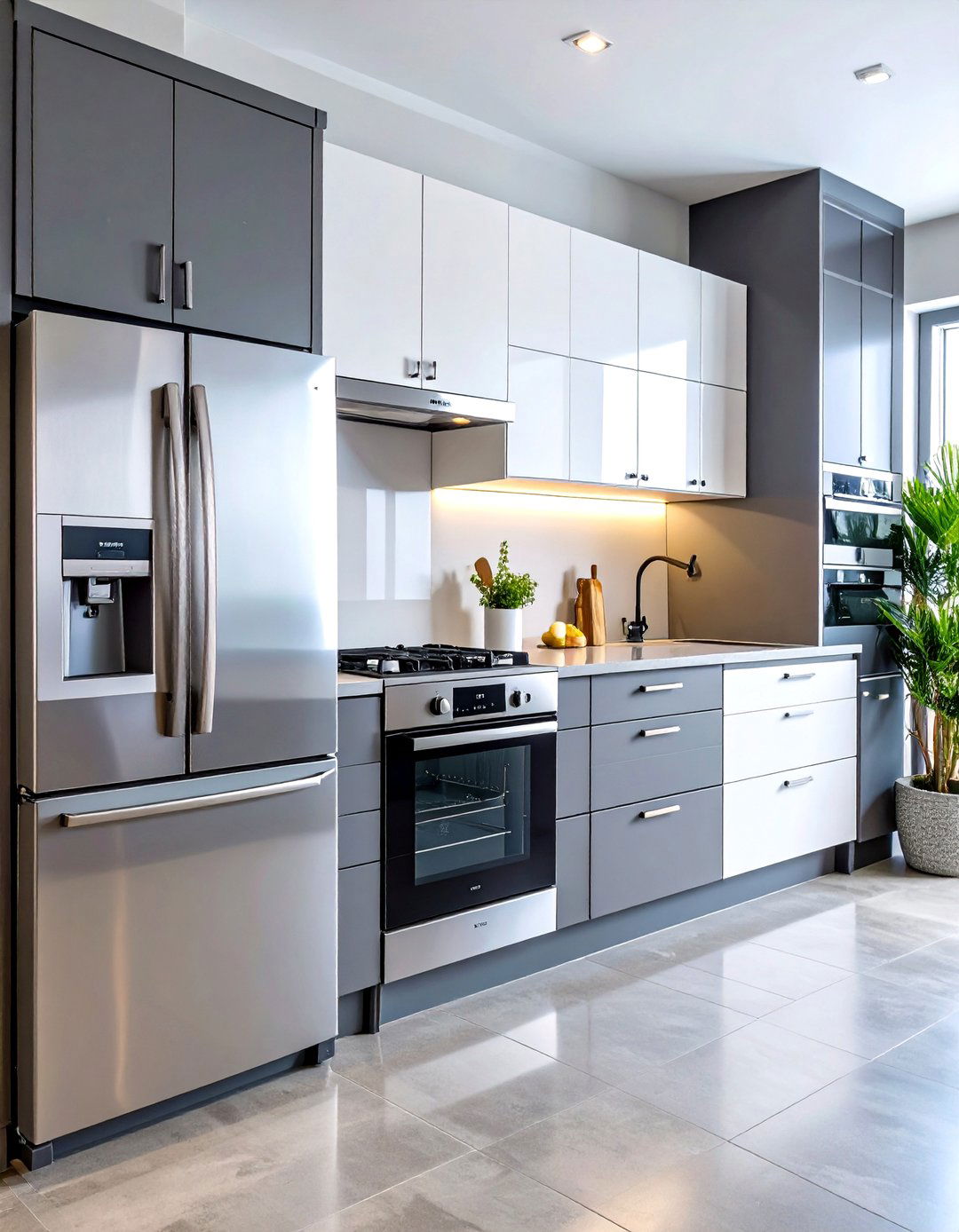
Leave a Reply